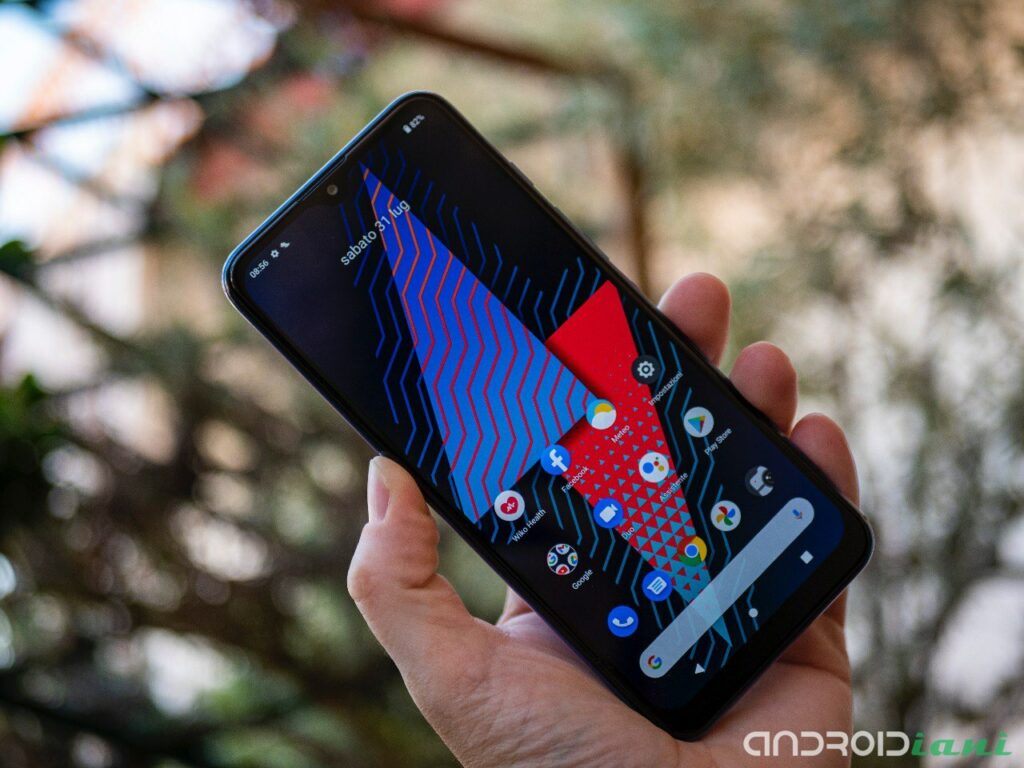A smartphone that can get through the day on a single charge. Utopia? No, it's Wiko Power U30, battery phone capable of reaching almost 4 days of autonomy. Let's find out how it behaves in our review!
WIKO POWER U30: UNBOXING Raw cardboard box and compostable plastics: Wiko Power U30 pays more attention to functionality than aesthetics, and comes in a minimal and totally eco-friendly package.
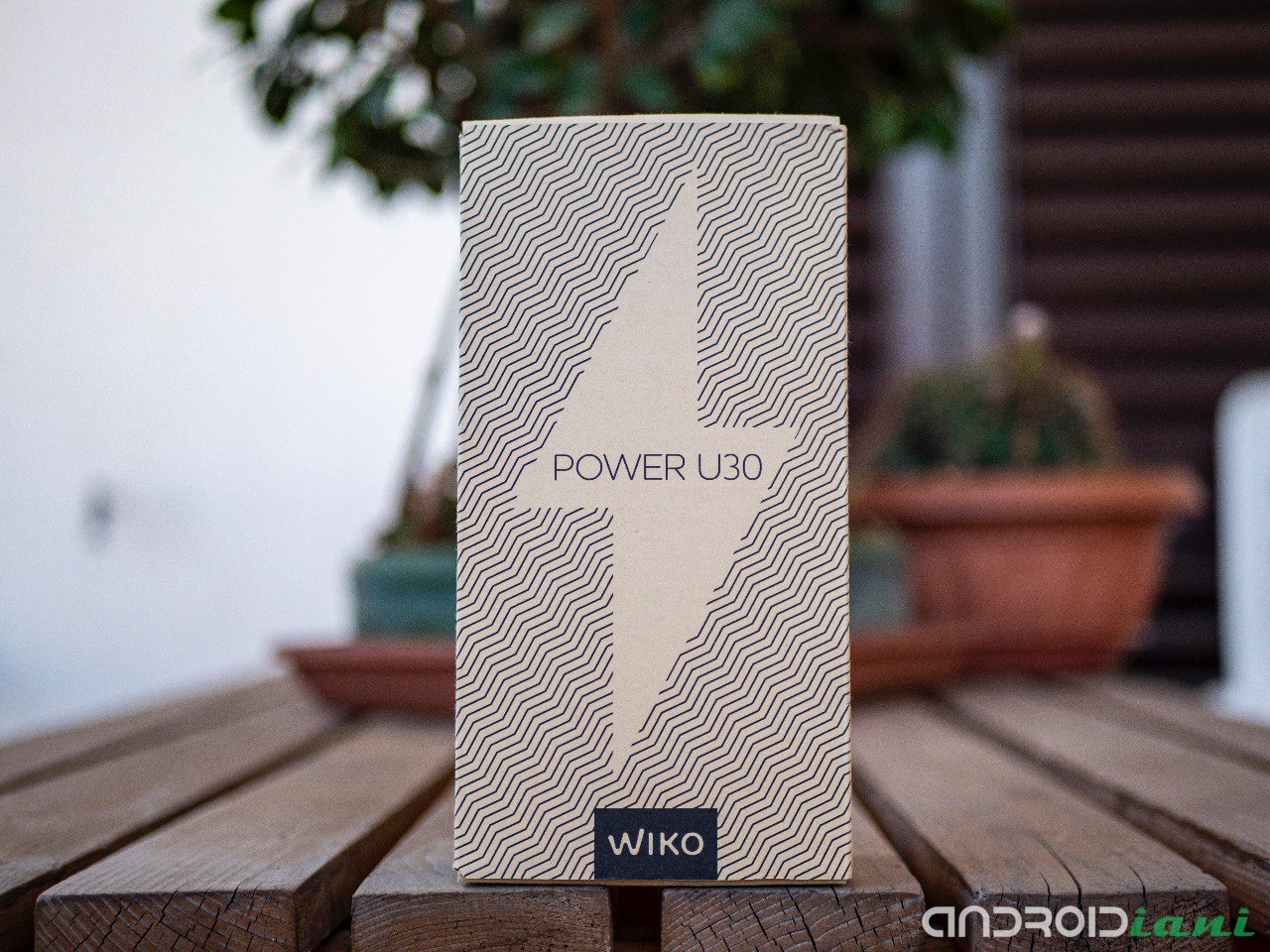
We remove the seal, open the lid and he is waiting for us, Wiko Power U30, in a sachet and with the classic display cover that screams loudly the main features of the device.
Immediately below the usual manuals, also of the same material as the box, 15W power supply, USB Type-C cable and a pair of earphones with an ancient design to say the least. Given the trend of no longer packing headphones (and in some cases not even the power supply, right Apple?), It's better cheap than nothing.
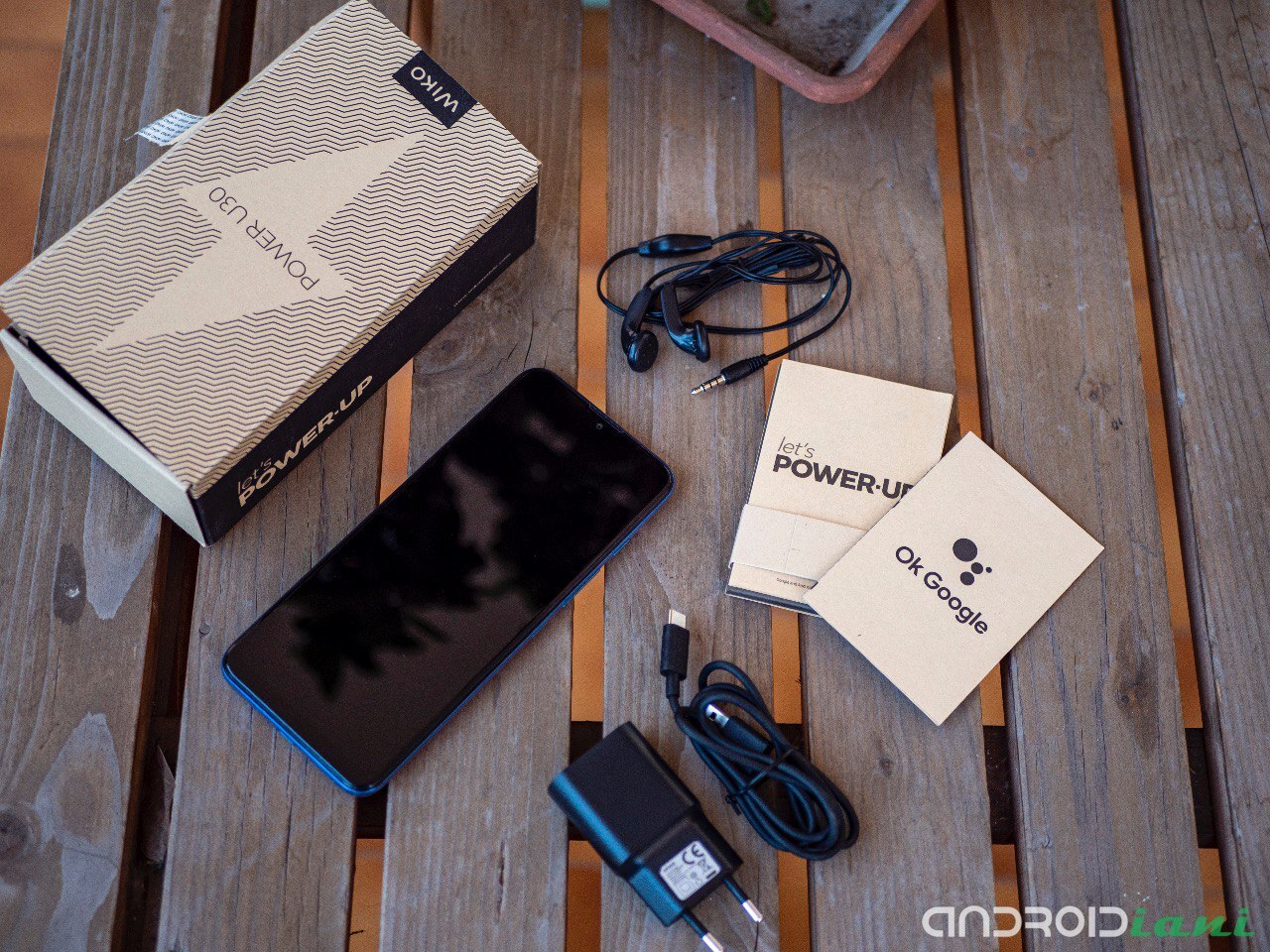
THE DEVICE Let's move on to the device: Wiko Power U30 does not try to hide its might in any way. With its 214g and a 173.8 x 78.6 x 9.45 mm body that encloses a 6.8-inch display it certainly isn't among the most manageable, but those who love generous diagonals will be fine: the weight is well balanced, and handling is everything. overall good, for the dimensions.
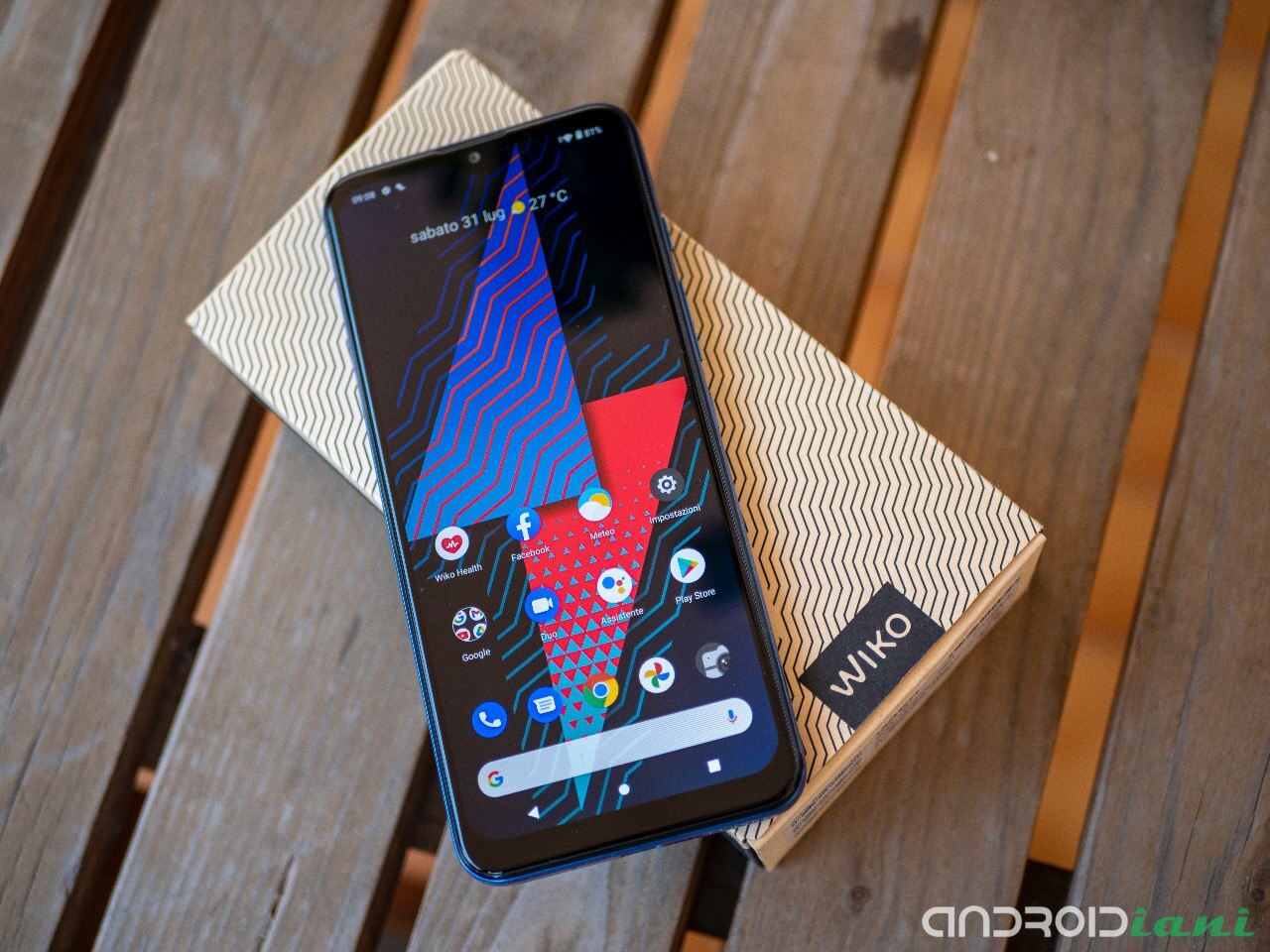
The version we tested, in blue color, has a particular diagonal striped texture on the excellent back cover, which in no case will be soiled by fingerprints, sweat or other amenities.
The build quality is really good: the reinforced polycarbonate body does not have any creaking or smudging, and the impression will be that of having a sturdy and durable device in your hands.
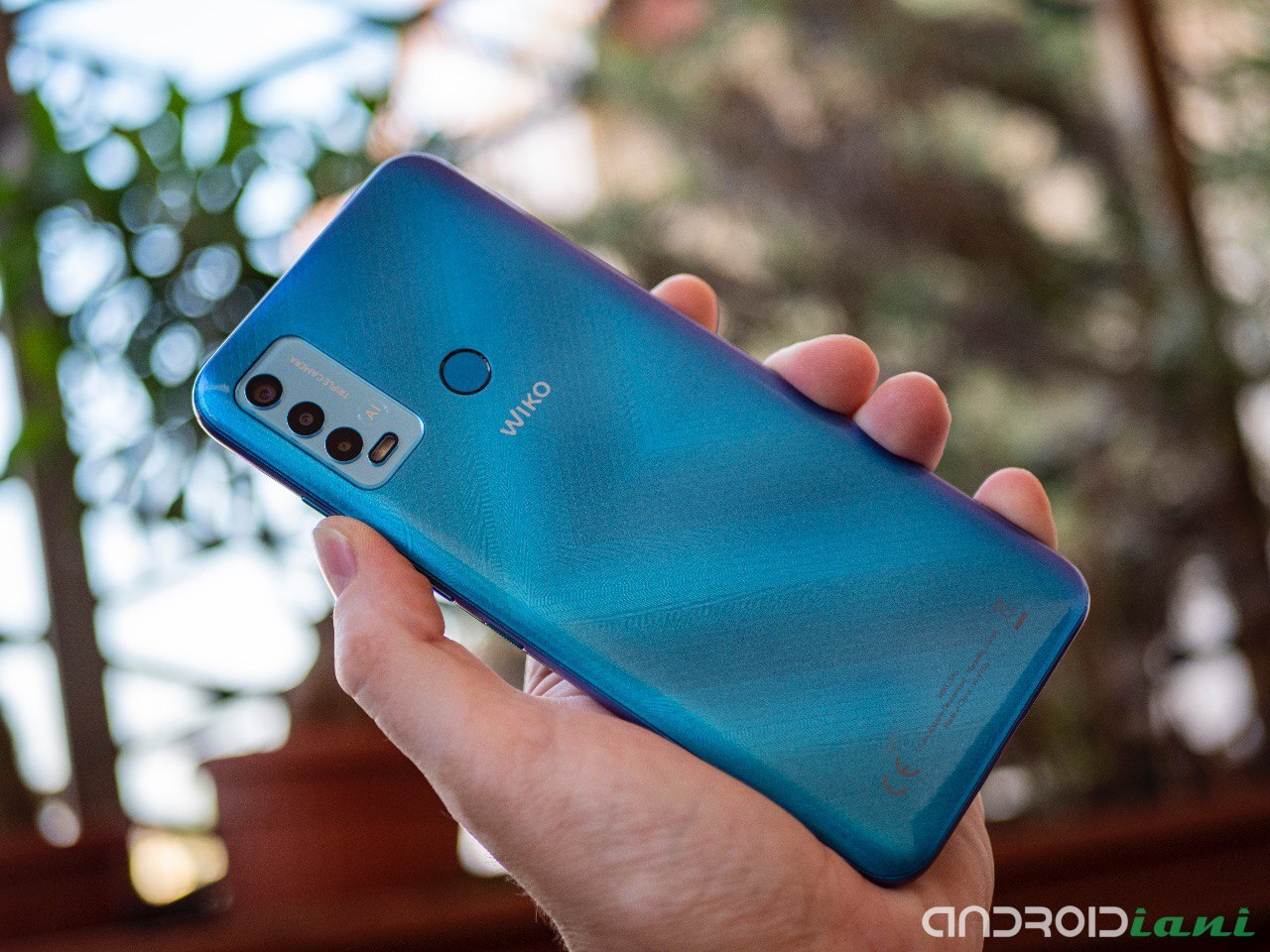
The on-board display is a 6.82-inch IPS, with a resolution of 720 × 1640 pixels and a 20.5: 9 ratio.
The side bezels are a bit thicker than usual, ditto the lower one, but given the size of the display they do not disturb too much, quite the contrary.
The front of the device houses the selfie cam, positioned in the center just below the audio capsule.
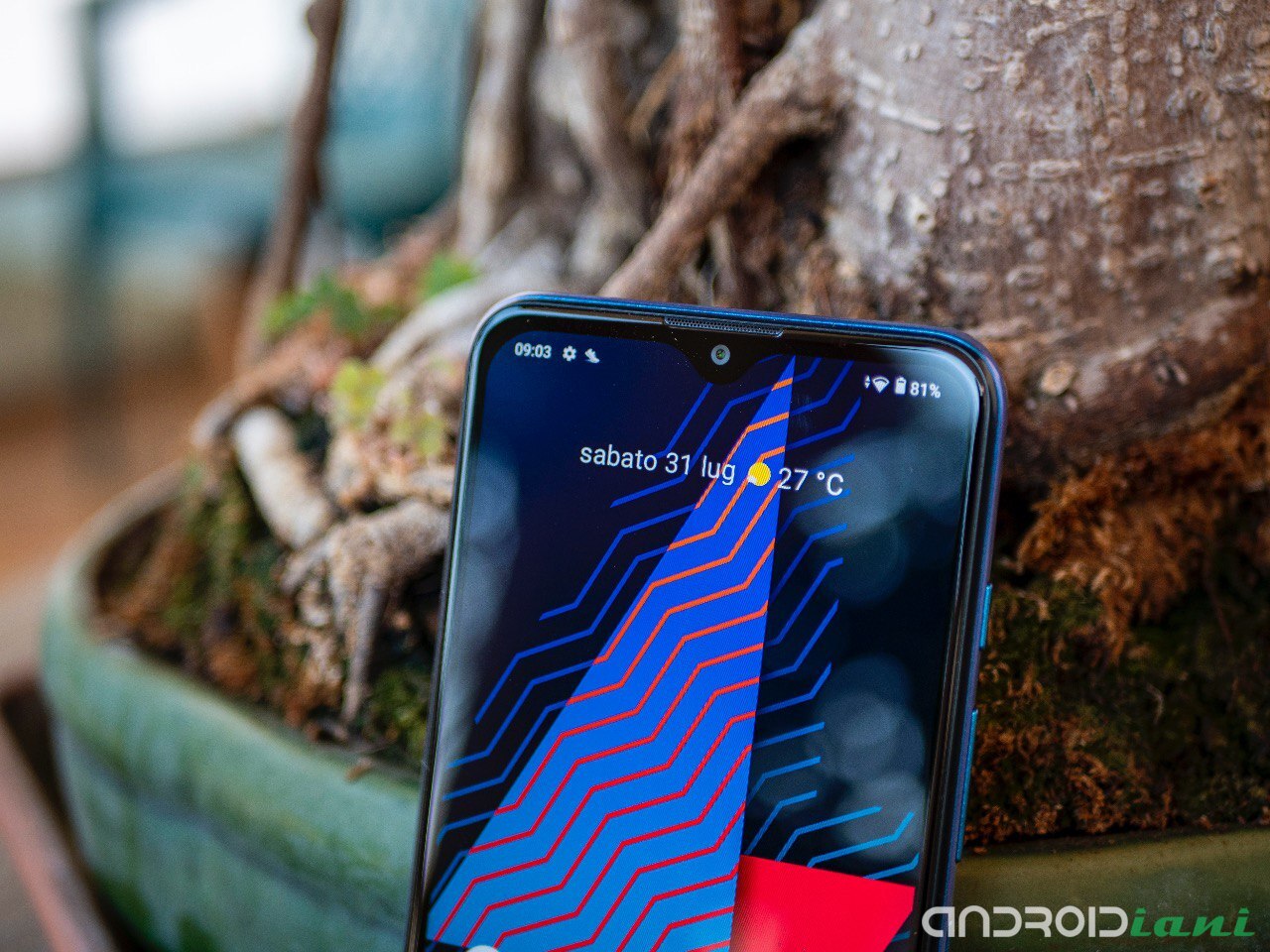
The side frames, flat at the top and bottom and curved at the sides to favor the grip of the device even without a cover, are combined with the color of the back cover.
The left side of the device houses the SIM slot, while on the right side we find the power key, a key dedicated to the Google assistant and the two volume keys.
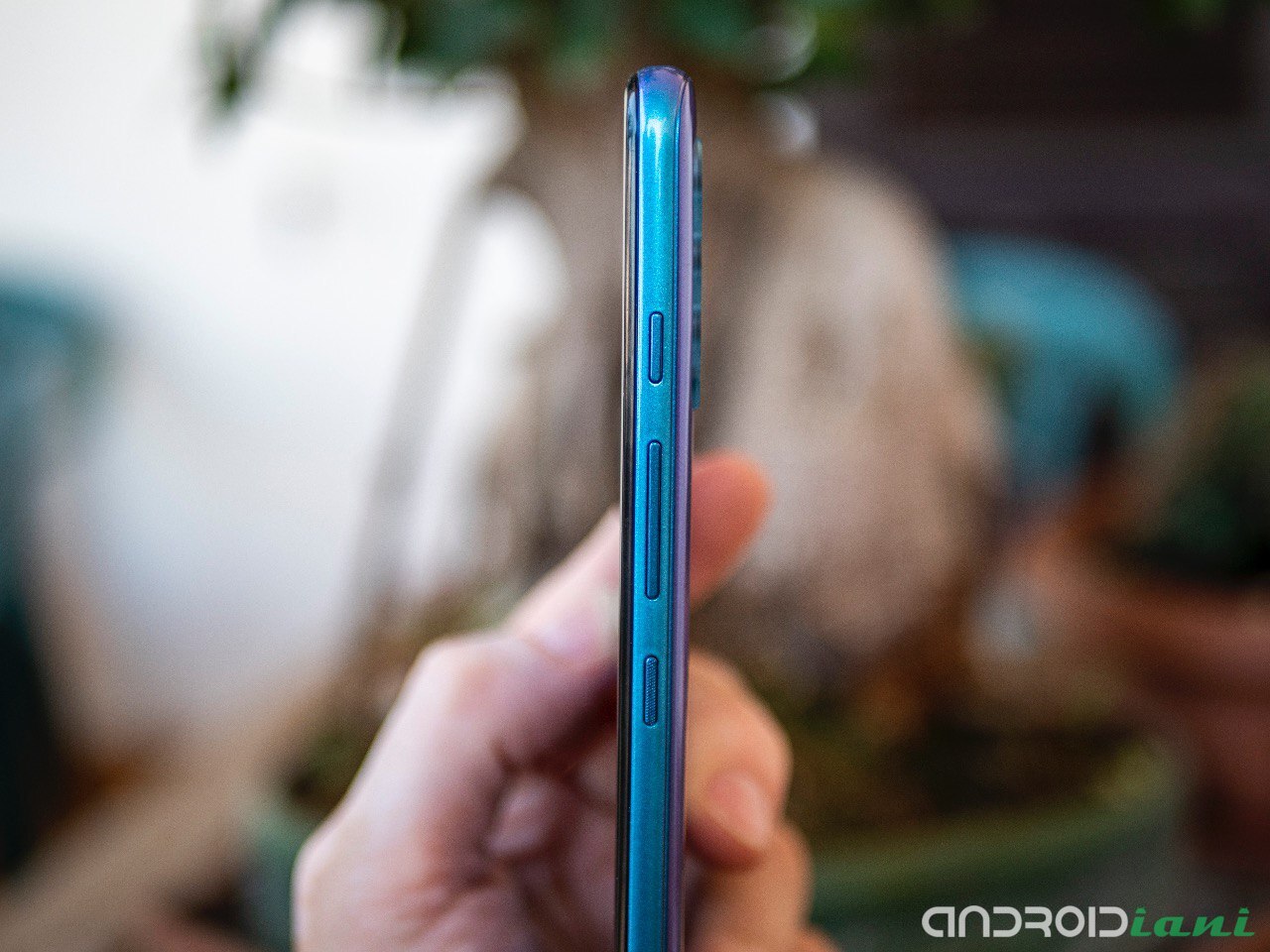
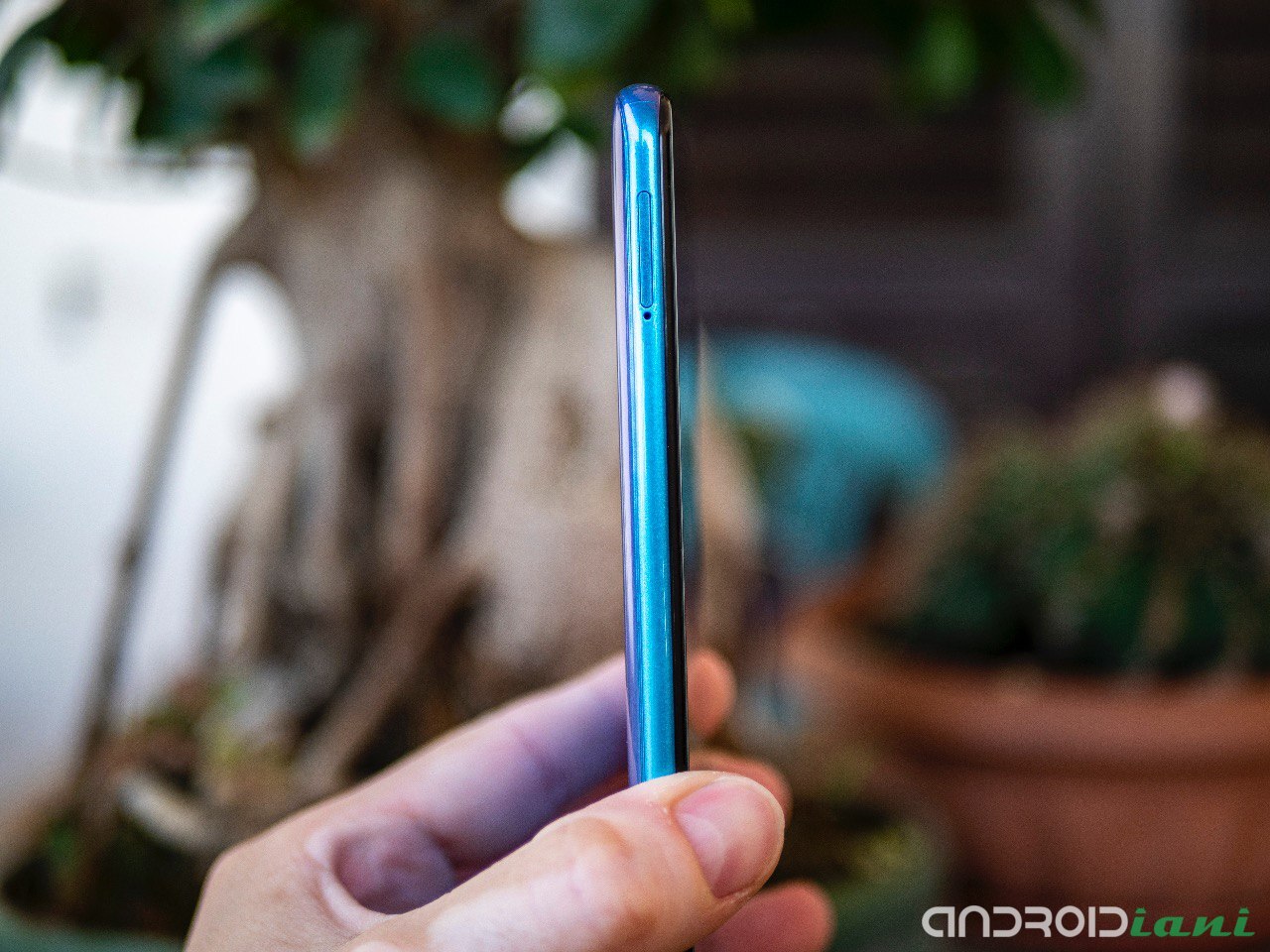
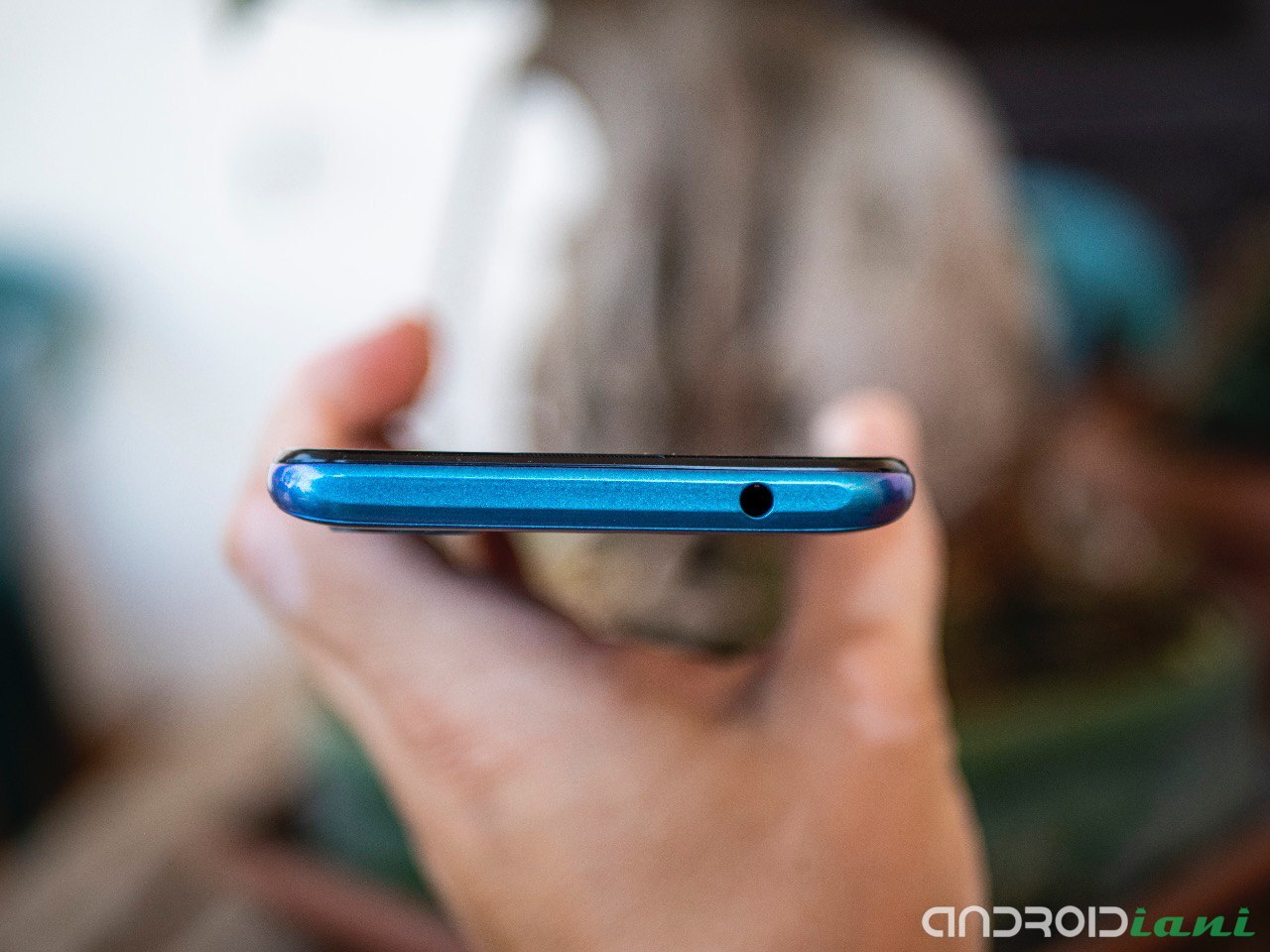
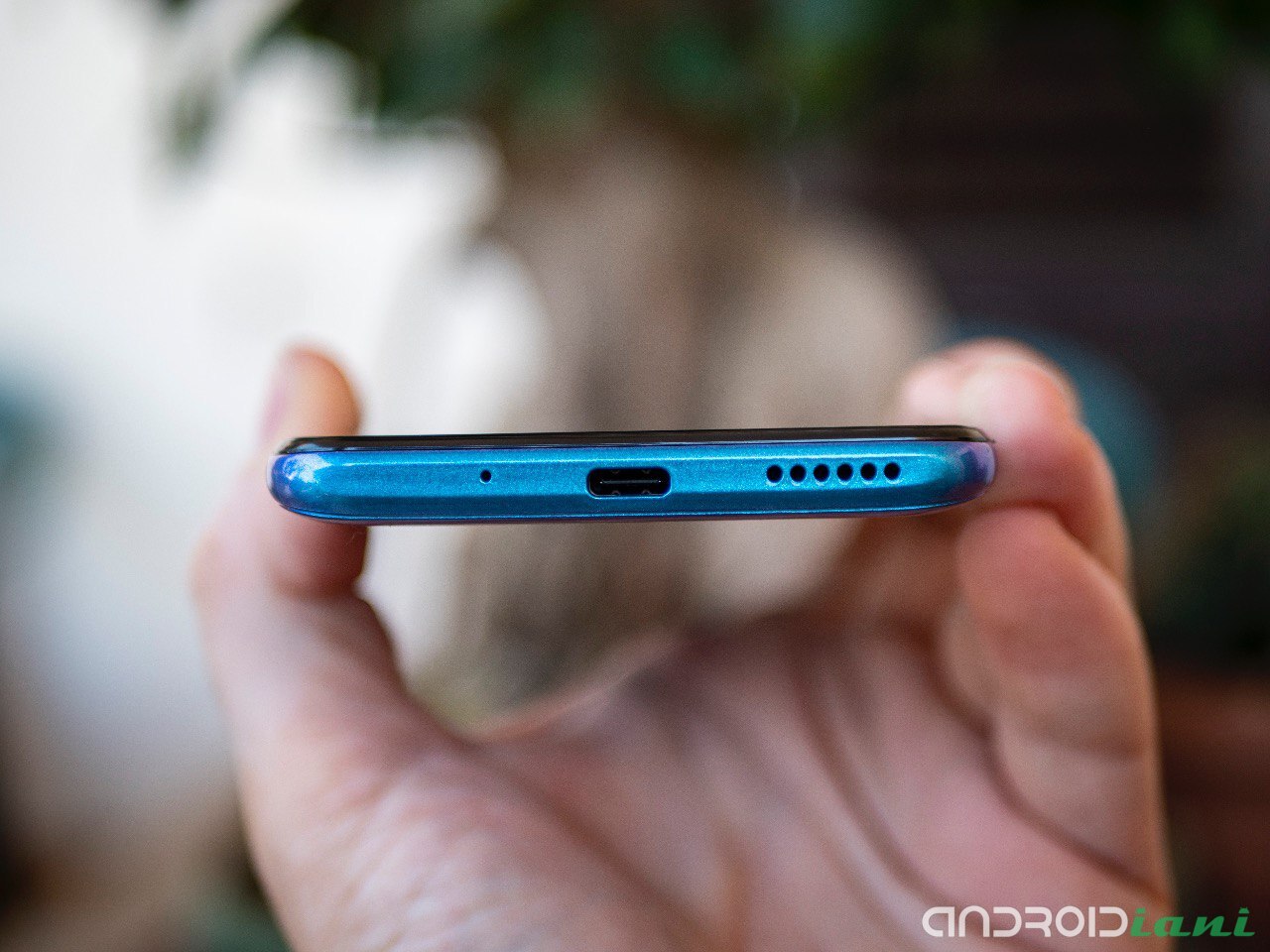 The upper part simply contains the 3.5mm audio jack, while the lower side contains the USB Type-C port, the speaker and the microphone.
The upper part simply contains the 3.5mm audio jack, while the lower side contains the USB Type-C port, the speaker and the microphone.
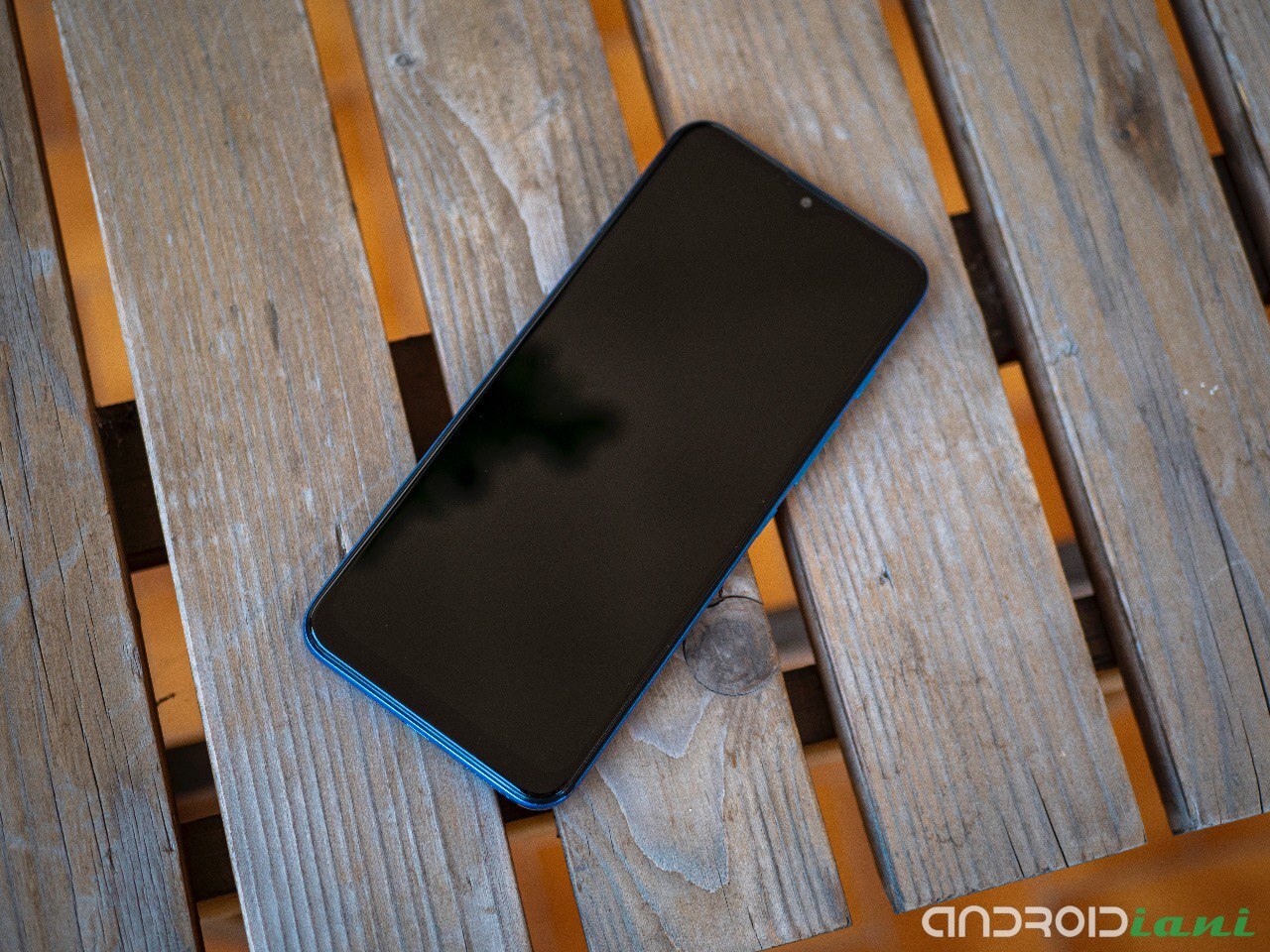
The back is occupied by the photographic compartment, consisting of 3 cameras set in a slightly raised box, which also houses the powerful dual tone flash.
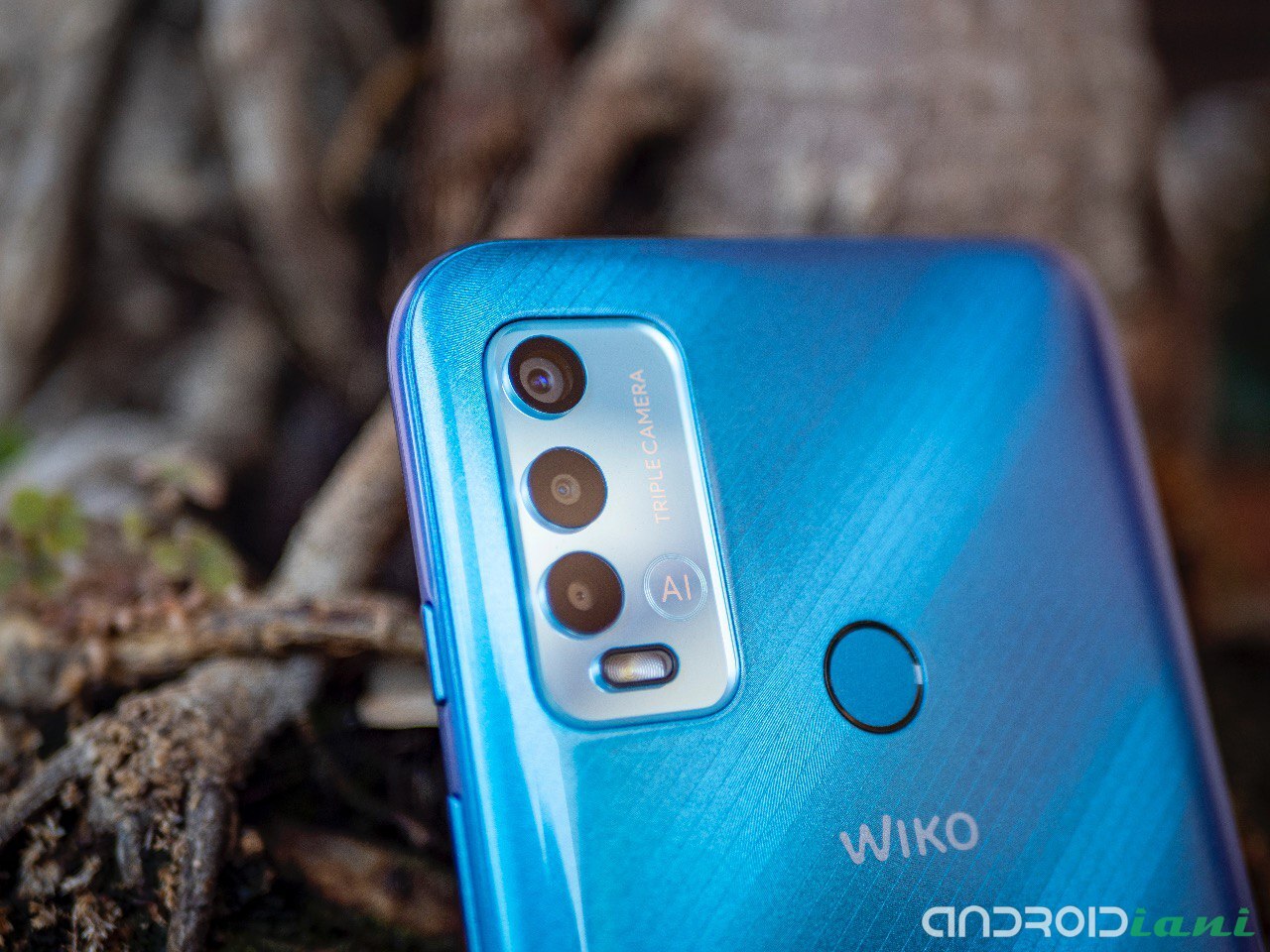
In the center, next to the cameras, we find the fingerprint sensor, easily reachable with the index finger.
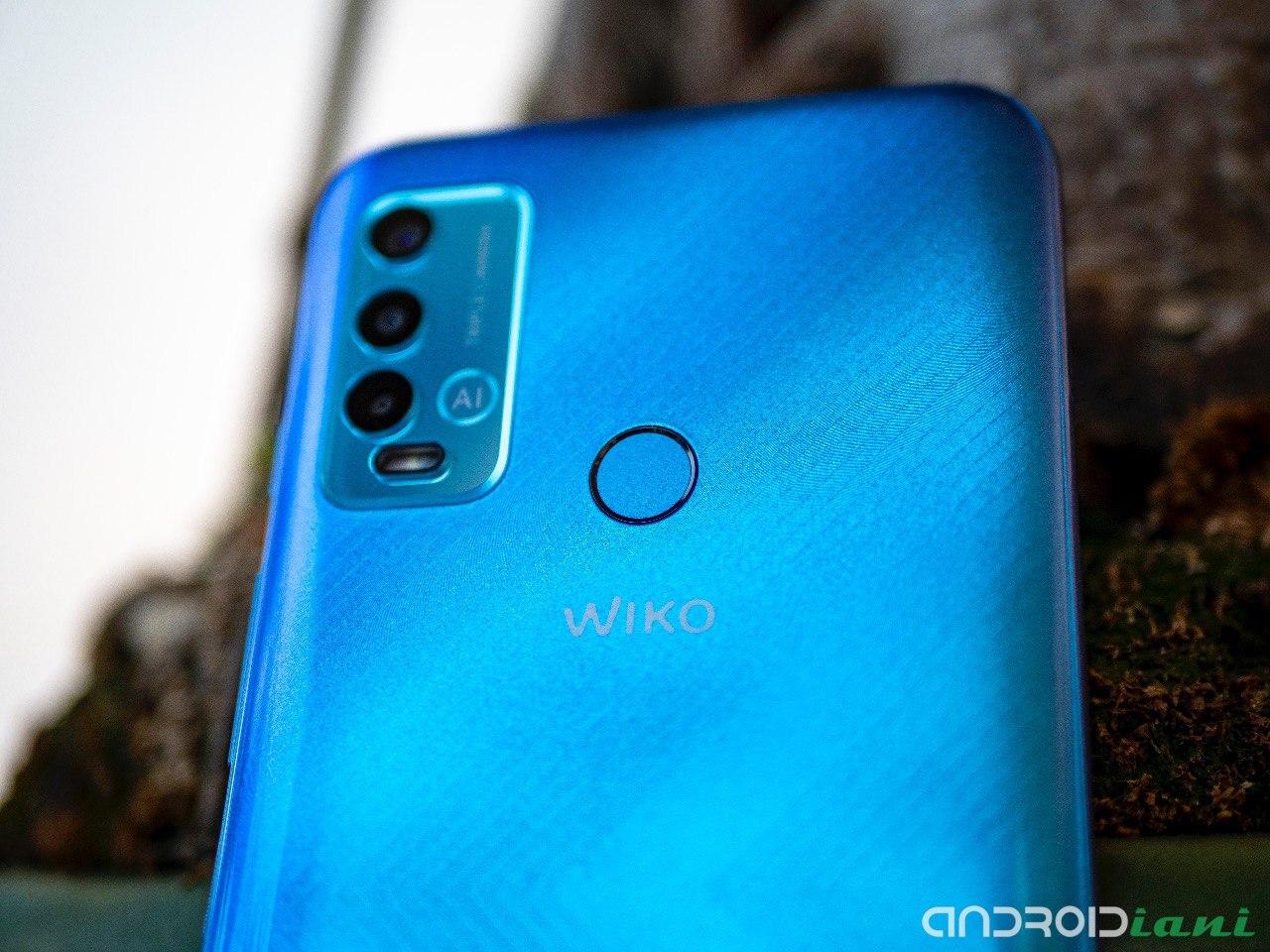
DATA SHEET Android 11 Operating System Processor Octa-core MediaTek G35, 2.3GHz
RAM 4 GB Memory 64 GB Display 6.82 ″ IPS V-shape Resolution 720 x 1640 pixels Rear camera Triple: 13MP + 2MP + QVGA
Front camera 8 megapixel Battery 6000mAh Dimensions 173.8 x 78.6 x 9.45 mm Weight 214g USB Type-C SIM type Nano SIM 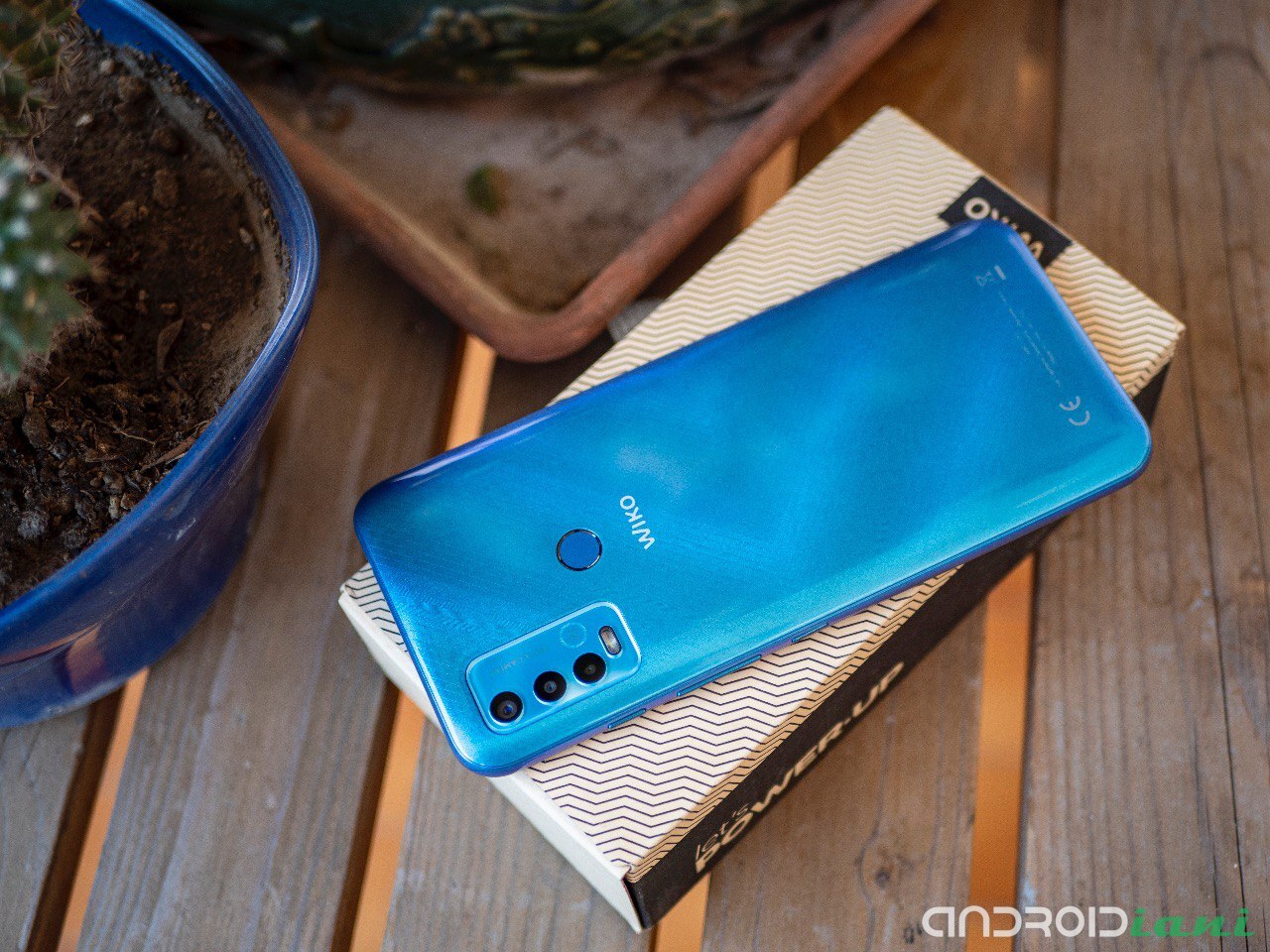
DISPLAY The IPS display on board of Wiko Power U30 occupies more than 90% of the front surface, thanks to the small hole that houses the front camera and to the overall reduced frames. The color rendering of the 6.82-inch panel is accurate, and among the settings there is the possibility to make changes to the color tone as well.
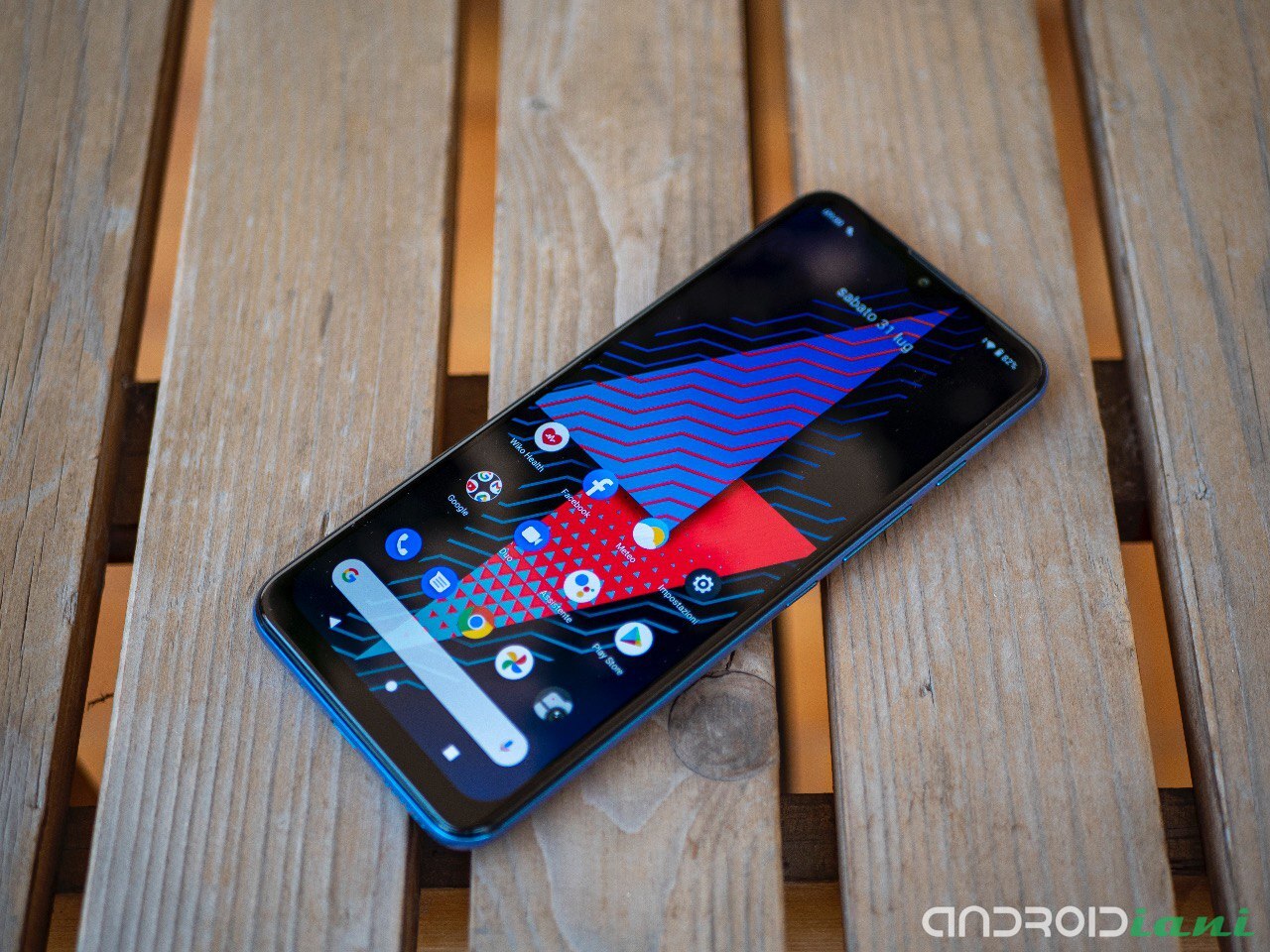
The brightness is high, and it is more than enough to set it to about half for a pleasant use even outdoors: with maximum brightness the screen will be clearly visible even in strong light conditions or direct exposure to sunlight. Excellent viewing angle, which does not show chromatic aberrations even at maximum inclinations.
The glass is made of Panda Glass, a valid alternative to the better known Gorilla Glass, which is able to protect the display from scratches and fingerprints.
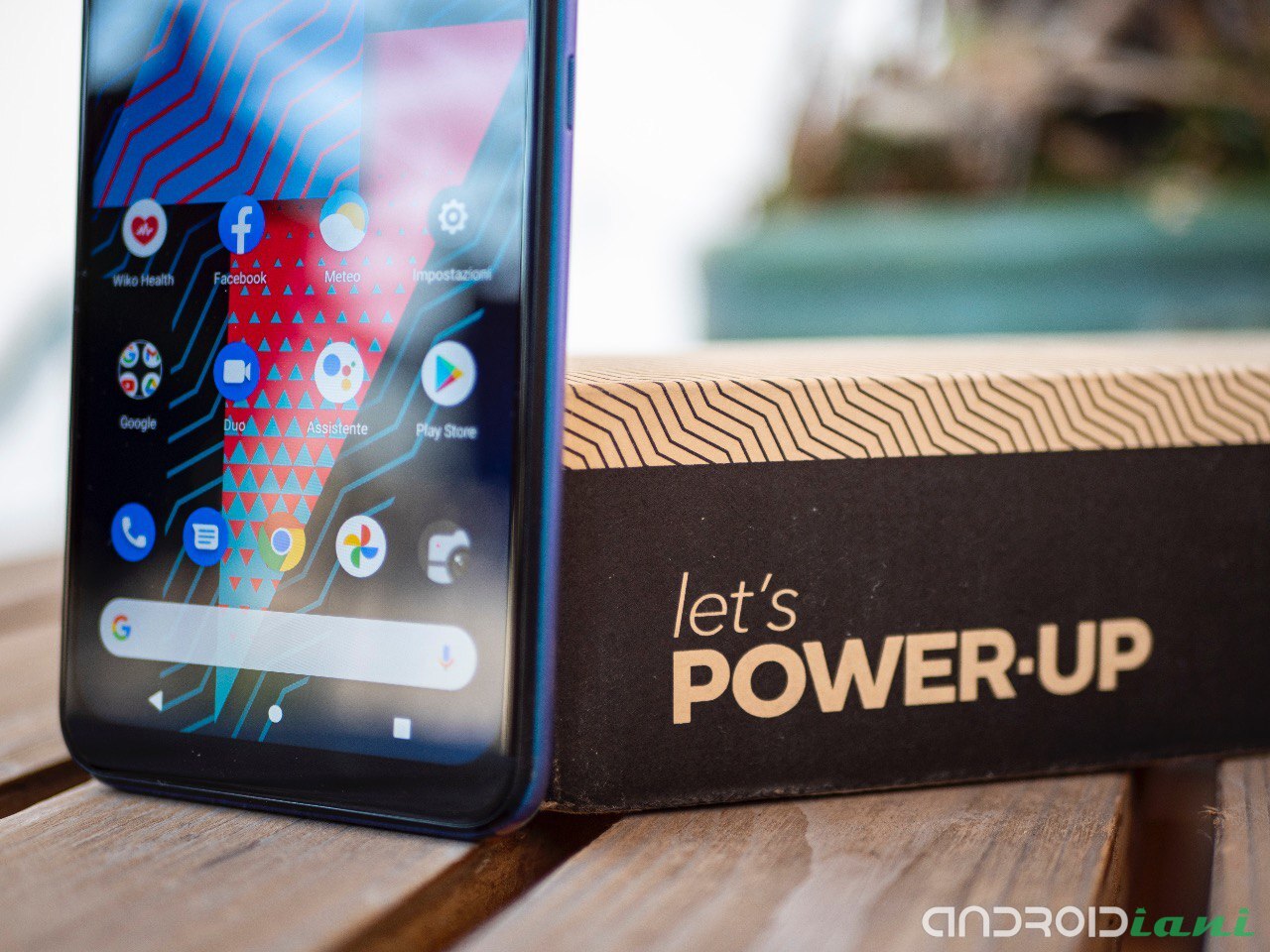
CAMERA Wiko Power U30 is equipped with a triple rear camera with 13 + 2 megapixel and QVGA sensors. The yield of the 13-megapixel main sensor is good in optimal light conditions, while it relentlessly drops at night. The secondary sensors are used for the AI scene recognition modes and for the bokeh effect, absent the wide angle mode.
Although there is no dedicated function, I found macro photos to be really excellent: you can take well-defined photos at a very short distance, as long as you are in good light conditions.
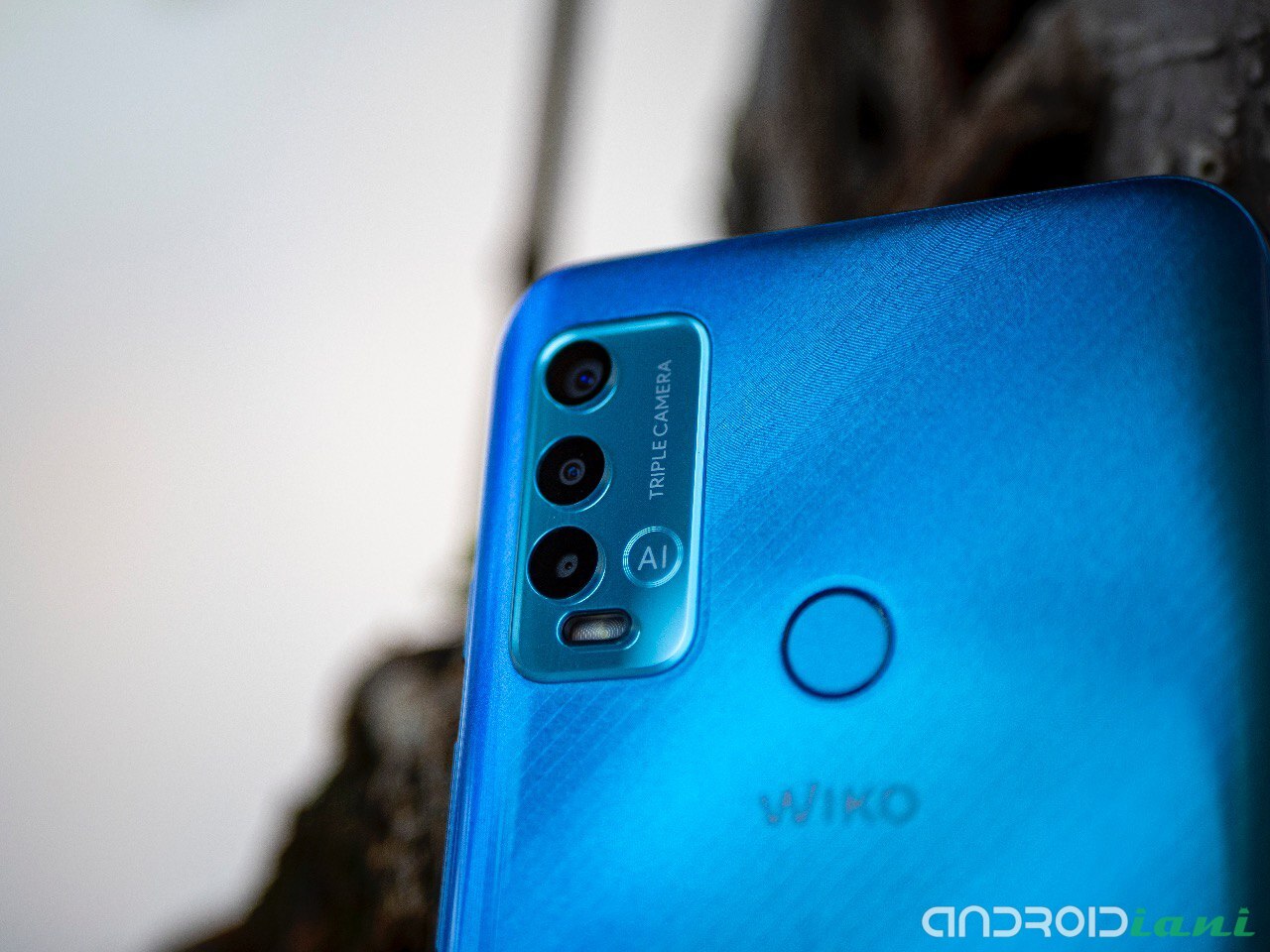
Photos in optimal lighting conditions are good, with well-defined details, although in some cases the management of color and contrast is not perfect. In low light conditions, night mode is literally mandatory, which improves the situation but does not work miracles.
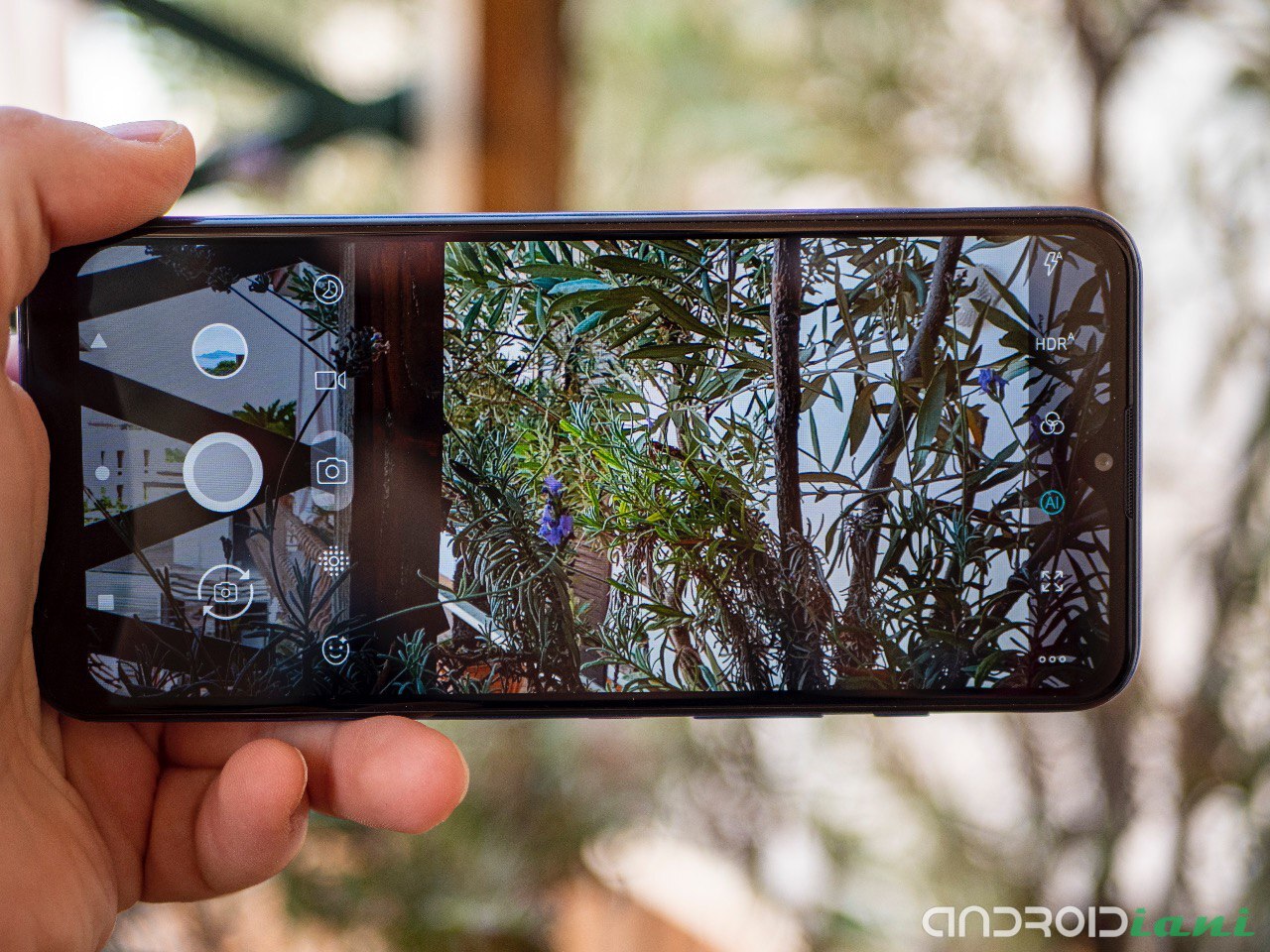
The 8-megapixel front camera does its job, although in this case a little more could be done on the chromatic side. The intervention of the automatic HDR is good.
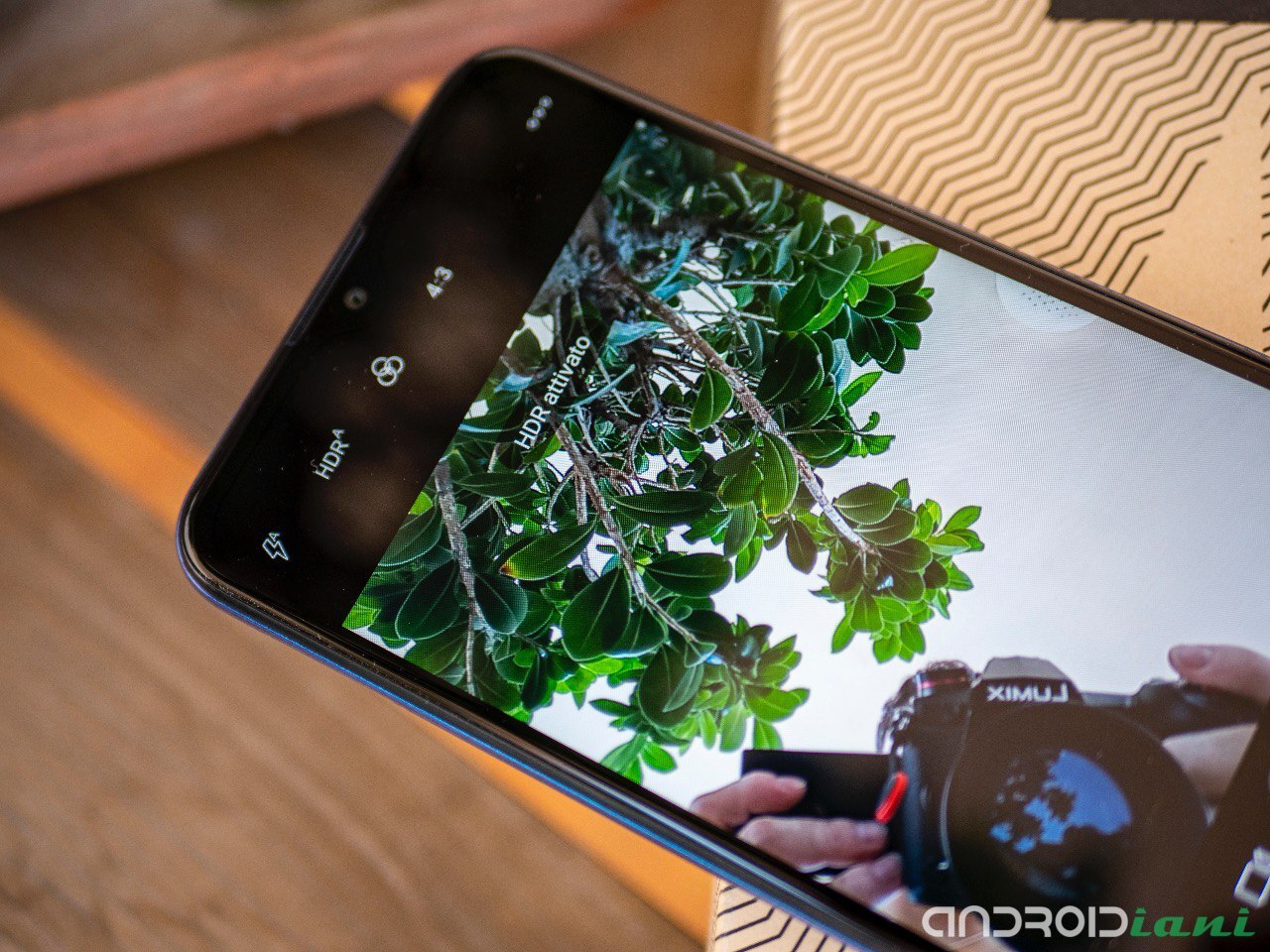
The photographic sector is full of interesting features and above all it can count on the use of artificial intelligence, which intervenes on the image rendering by identifying the type of scene from time to time, very quickly and all in all precise. Also present is the PRO mode, which allows you to intervene on a series of settings in order to improve the shot.
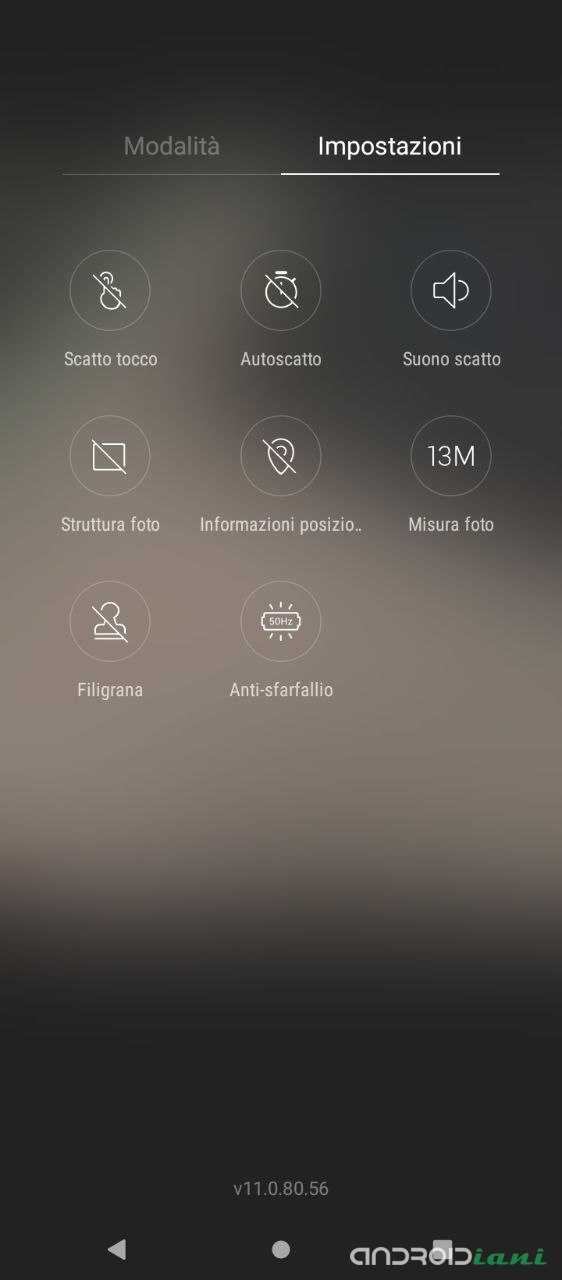
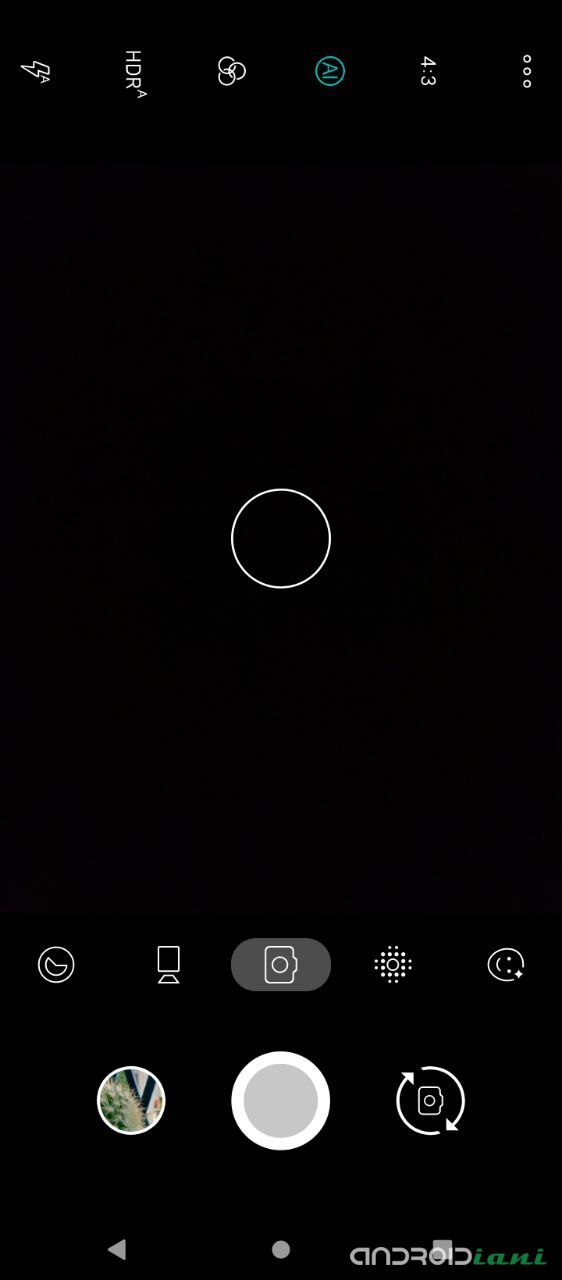
The graphic interface of the camera is very clean and intuitive, with all the elements well organized and the many functions within easy reach.
Also not bad is the front camera, equipped with HDR and portrait mode, which artificially recreates the bokeh effect.
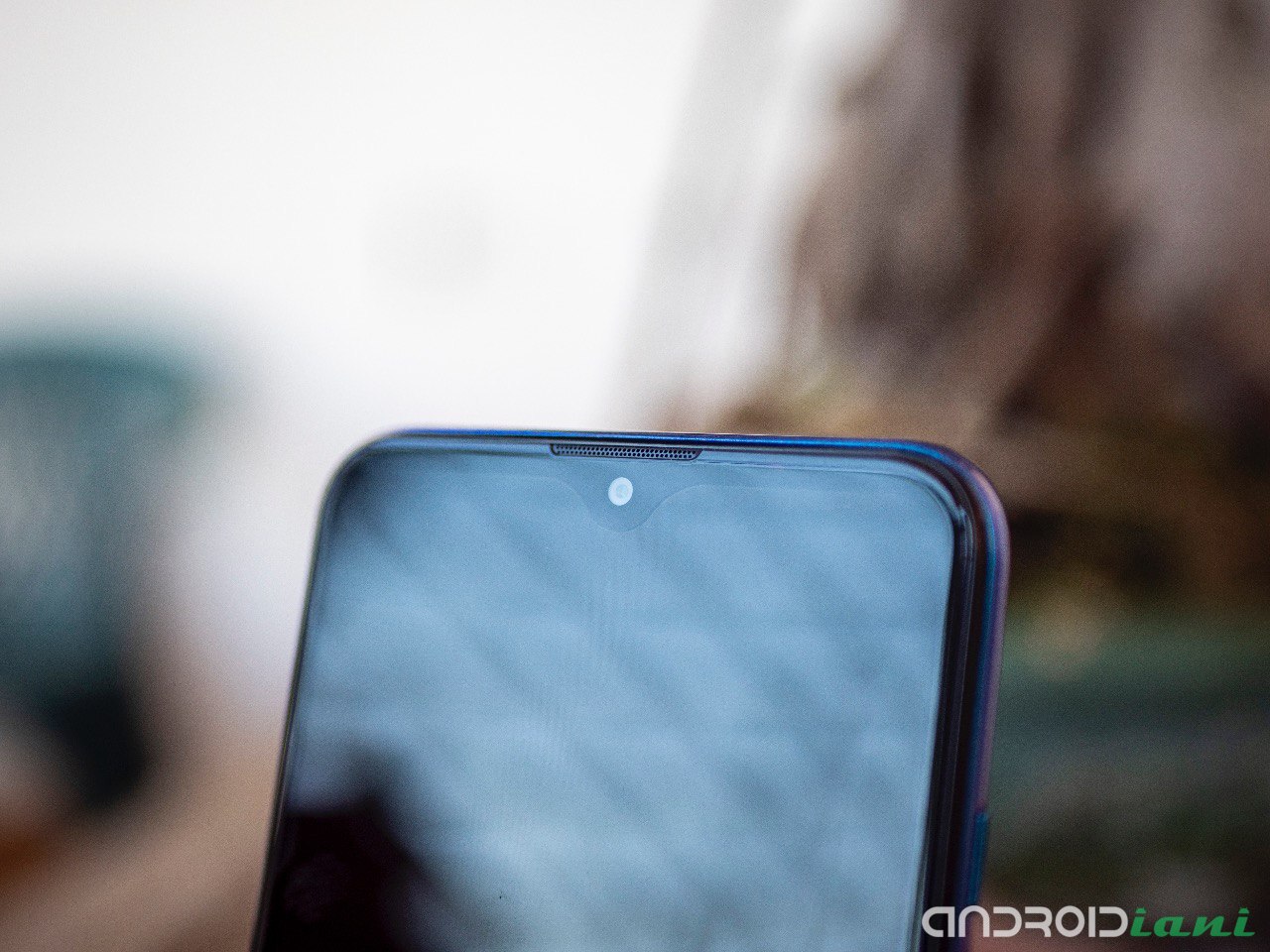
The dual LED flash illuminates the scene well and does not tend to burn colors even in almost total darkness, while the automatic HDR mode works well in the recovery of shadows and lights.


 I tried some shots in really harsh light conditions, with almost total backlight, and the result I must say surprised me. There was a good recovery of the scene, both of the shadows and of the lights.
I tried some shots in really harsh light conditions, with almost total backlight, and the result I must say surprised me. There was a good recovery of the scene, both of the shadows and of the lights.
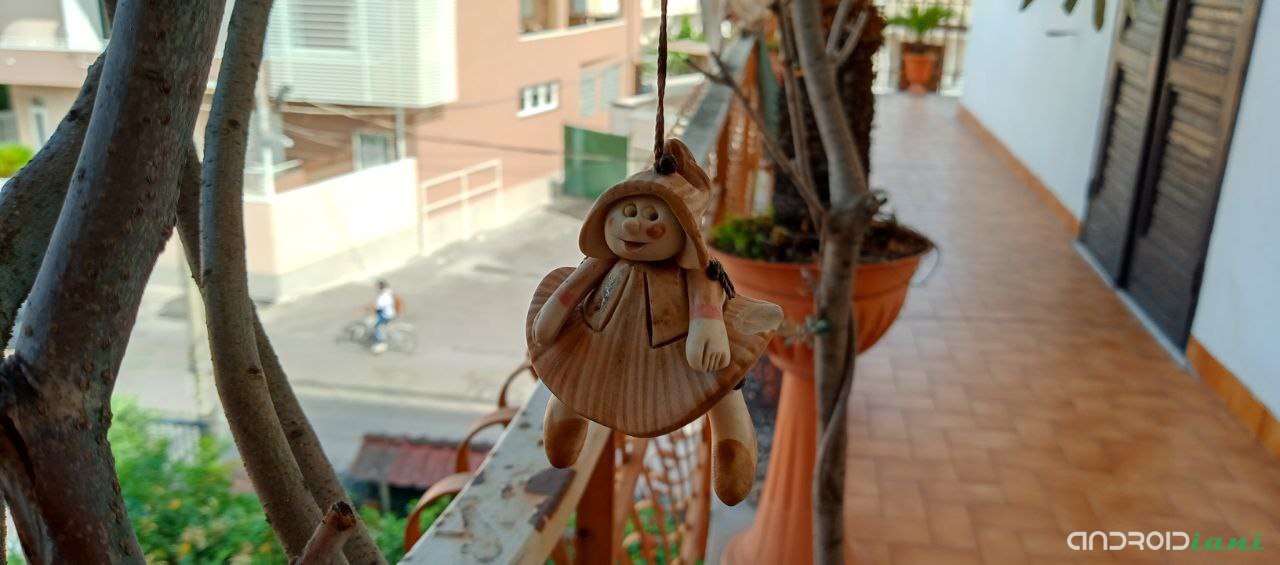
Excellent close-range performance, which returns a good number of details. Less well the portrait mode, which tends to mix the situation a little too much when the details are too many.






 When the lights go down the noise starts to be heard, even if it is handled really well.
When the lights go down the noise starts to be heard, even if it is handled really well.
Good performance in the video sector, in 4K at 60fps, where the excellent hardware supplied to manage everything works very well.
SOFTWARE & HARDWARE Wiko Power U30 arrives in your hands with a semi stock version of Android 11, with Wiko launcher and classic customizations.
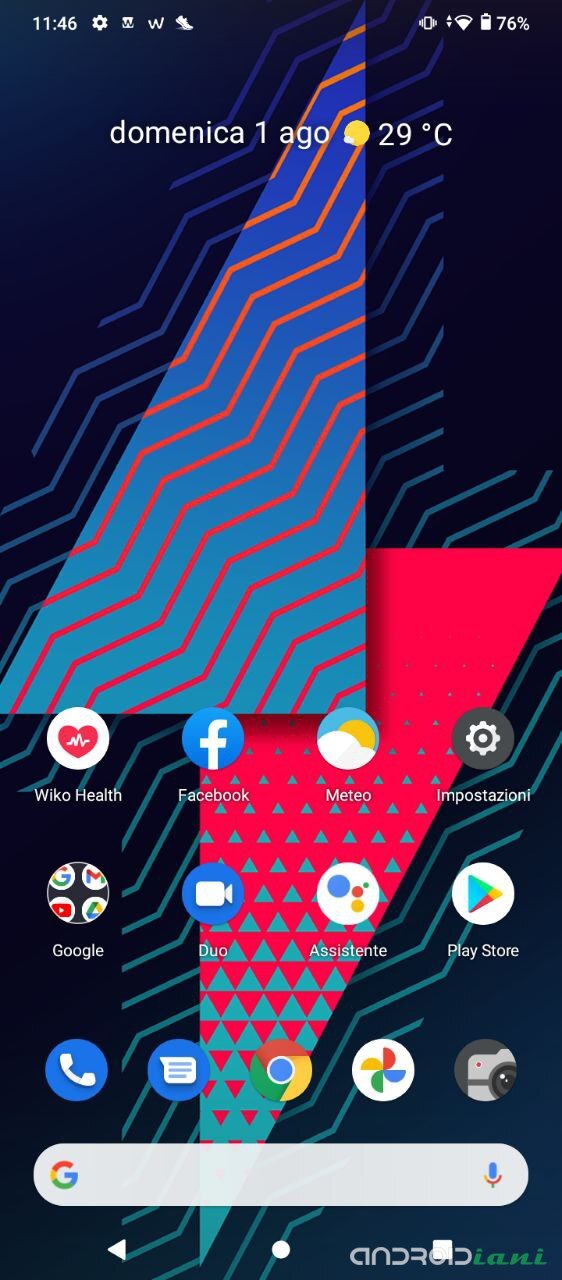
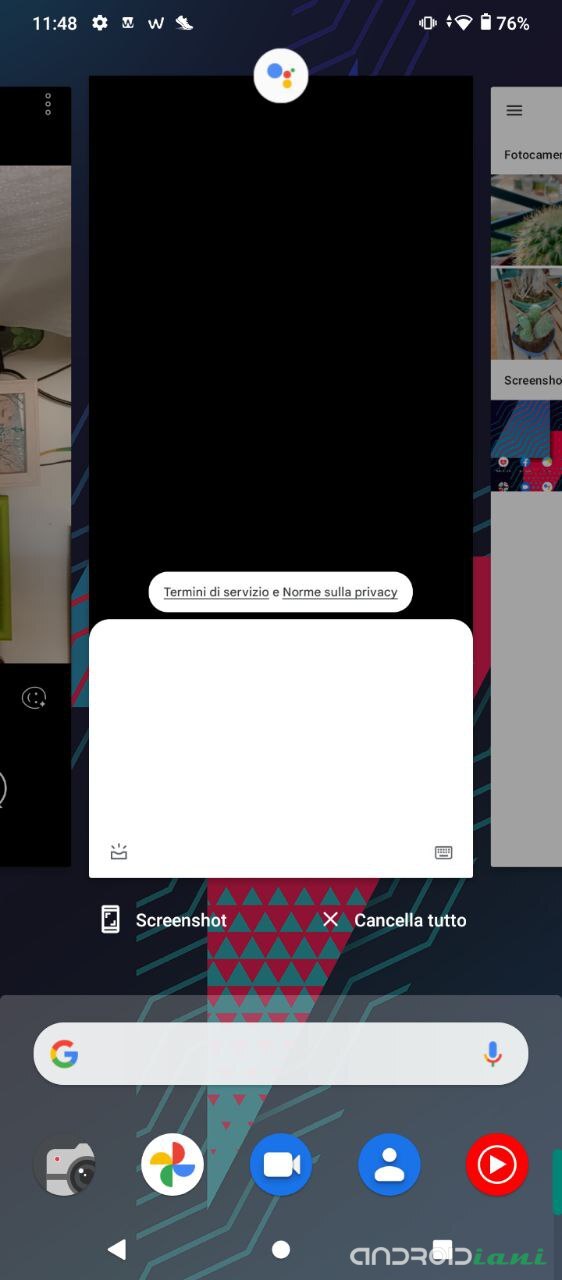
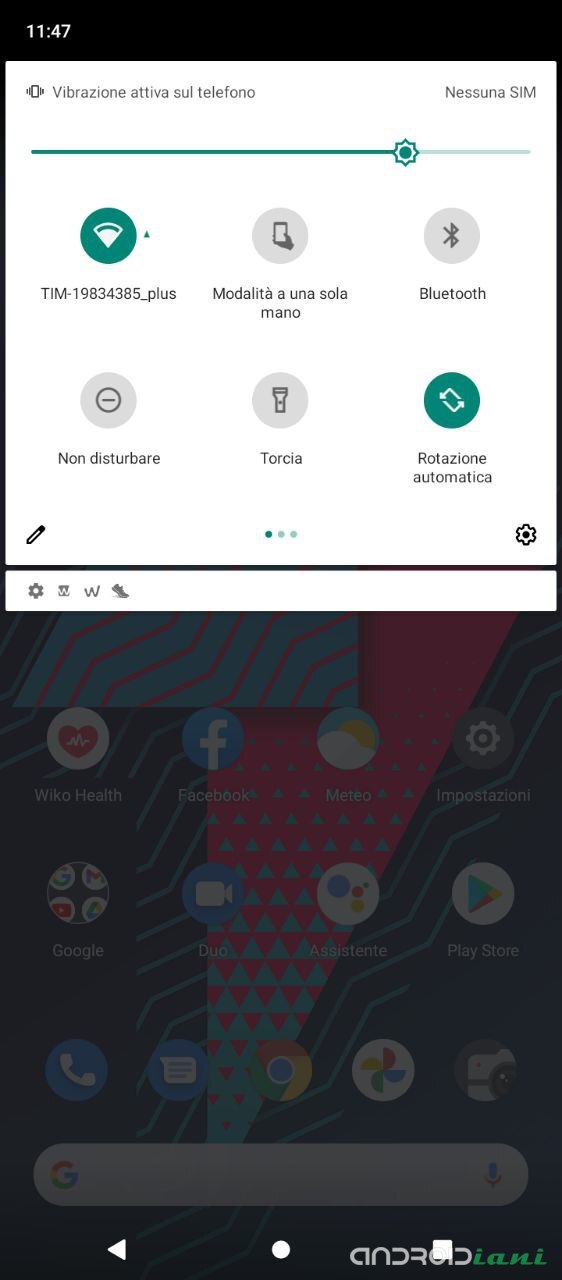
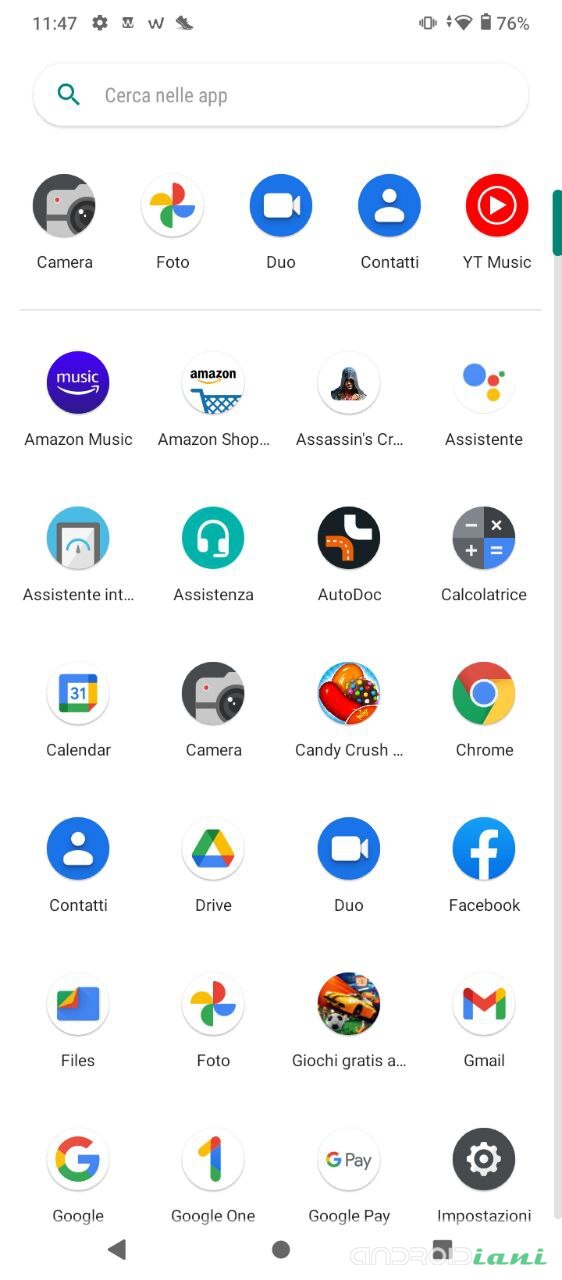

The performance is good for everyday use, although there are small slowdowns due to the processor. On board we find many interesting features, such as the classic game mode, which uses a particular Hyper Engine to improve performance, various gestures and one-handed modes, very useful given the important diagonal of the display.
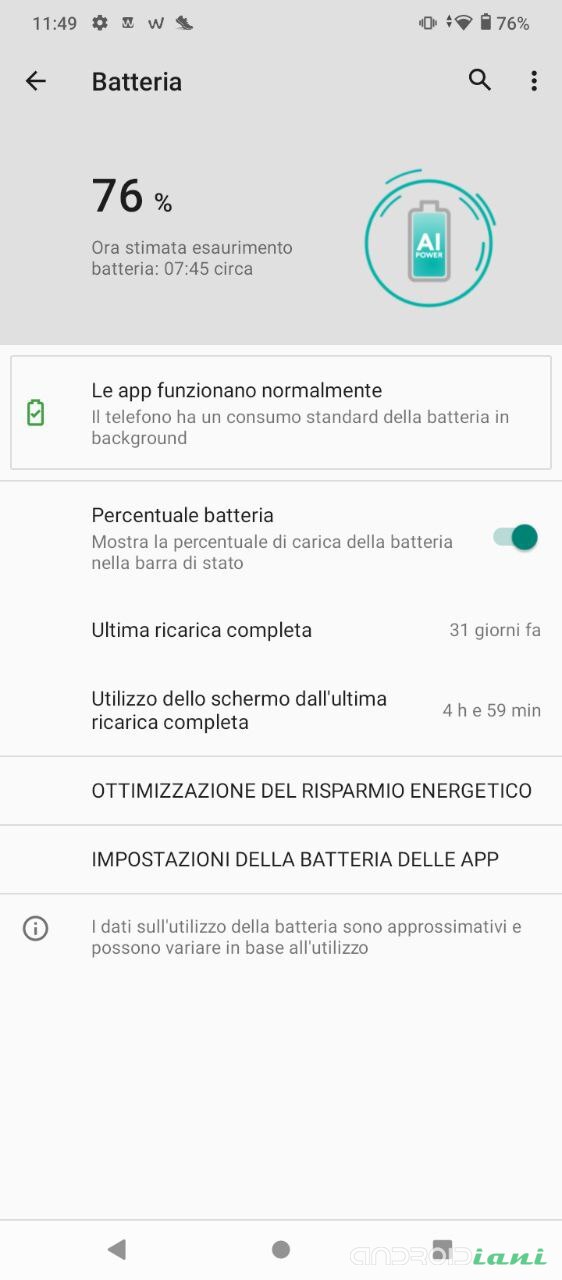
The performance on the gaming side is not bad, where the Hyper Engine intervenes: it manages to handle heavy and graphically demanding games, such as Genshin Impact, quite well. The intense heat of these days put the Wiko Power U30 to the test, which warmed up a little while running the games. When the on-screen situation gets messy, there's no shortage of slowdowns, but overall the experience is enjoyable.
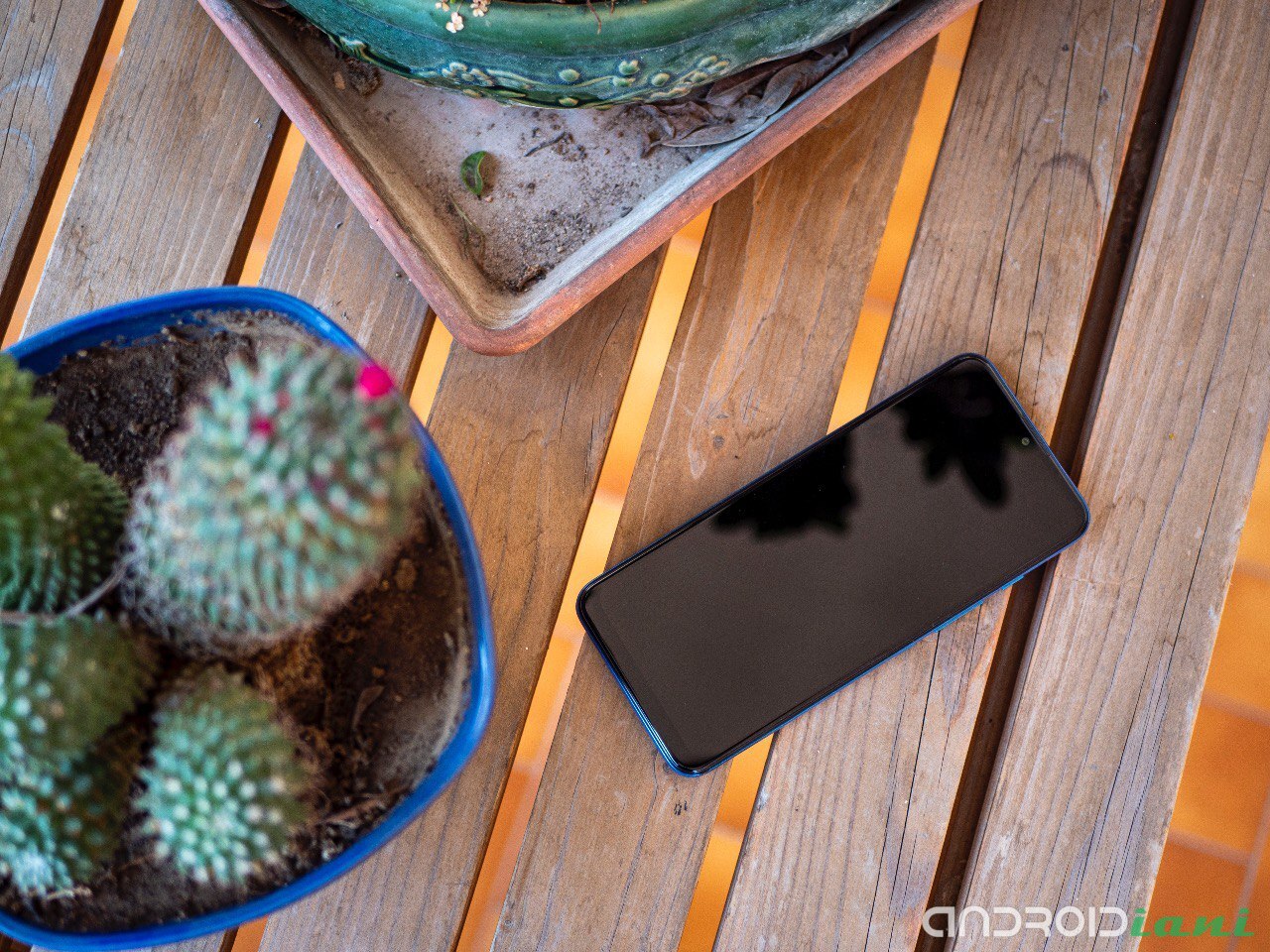
Excellent Wi-Fi reception and the possibility of expanding the internal memory via MicroSD. The picture is completed by a Bluetooth 4.2 chip, A-GPS, Glonass, Galileo and BeiDou sensors, and support for category 4 4G LTE networks.
BATTERY The strong point by definition of Wiko Power U30 is undoubtedly the mammoth 6000mAh battery, capable of ensuring autonomy for well over a day, even in conditions of intense use. Using it as the main device I was able to stay away from the power supply for 3 full days. I had to charge it on the 4th day, around lunchtime, so let's say that the declared autonomy of 4 days is true.

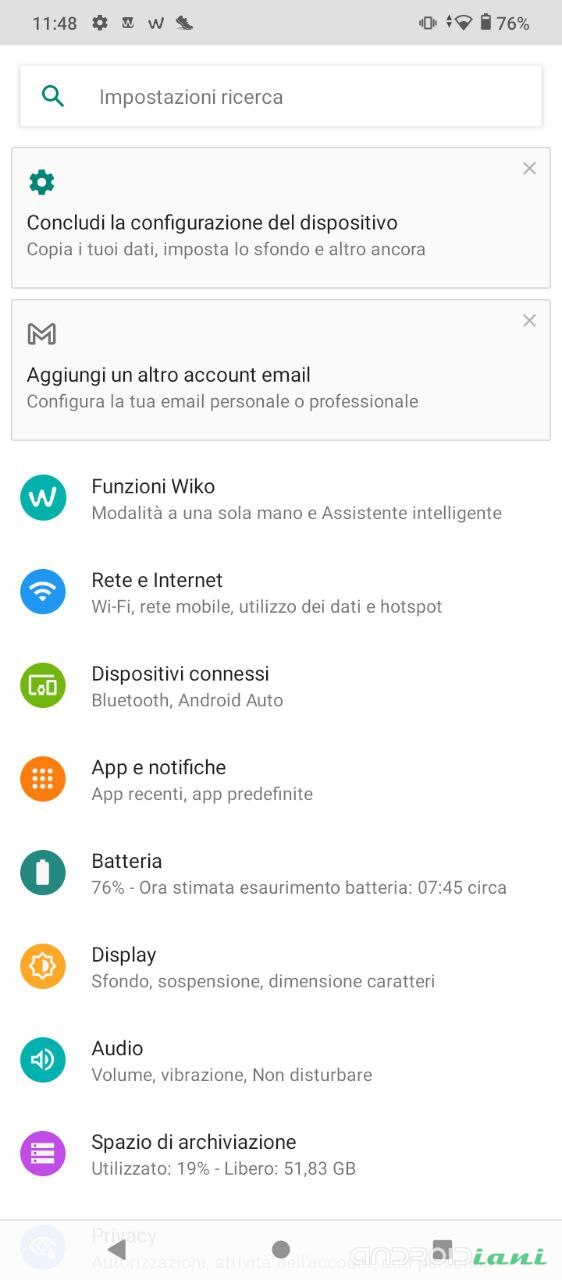 The AI functions related to the battery, which optimize the power based on use, are also favorably intervening on the autonomy.
The AI functions related to the battery, which optimize the power based on use, are also favorably intervening on the autonomy.
During the test days I took pictures, recorded some short films, played a bit and surfed on the internet and social networks.
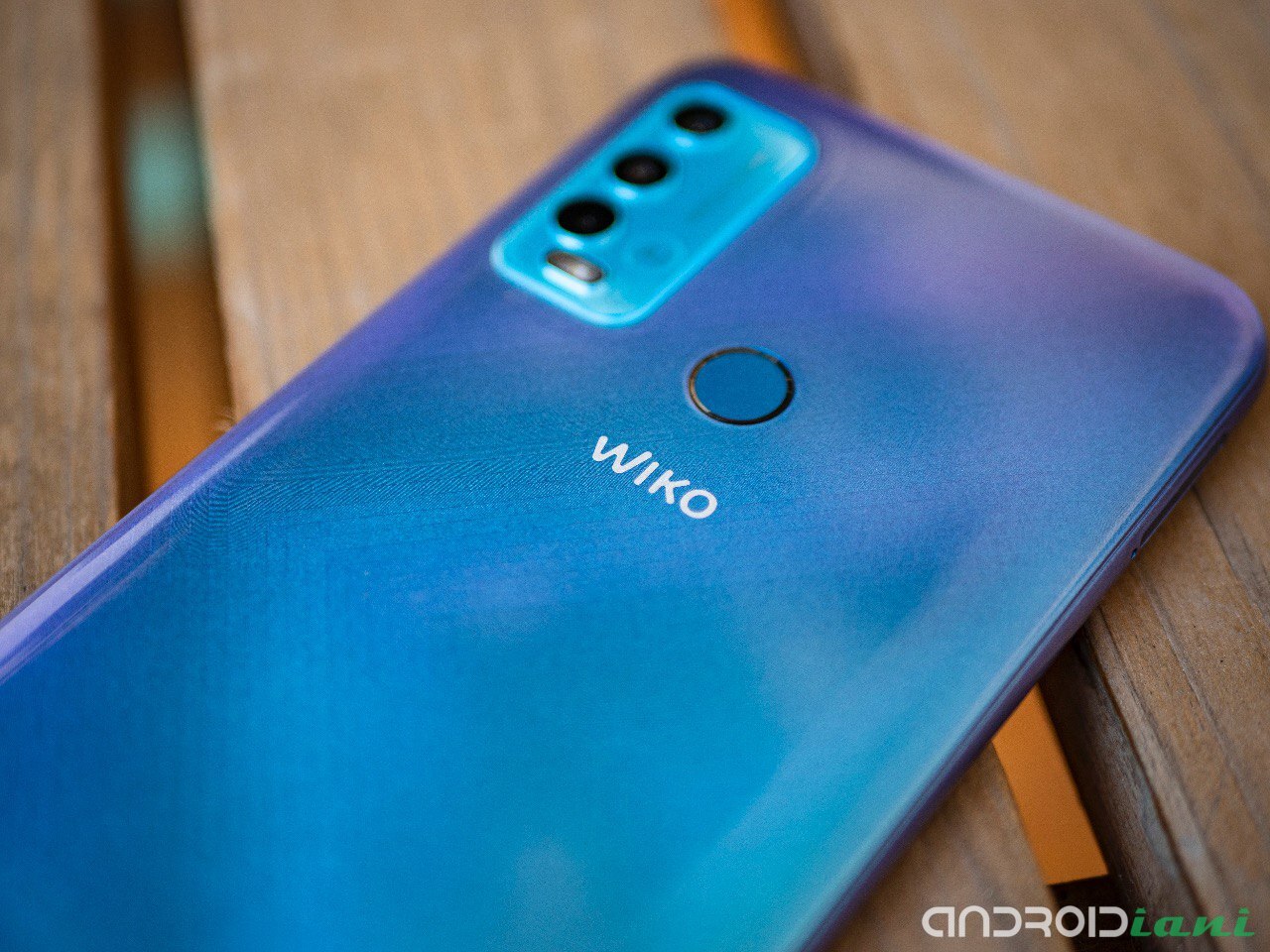
CONCLUSIONS Wiko Power U30 is undoubtedly a good device, and stands out among its competitors in the battery phone sector. Despite the bulky battery, the device is aesthetically very pleasant, with a fair and well distributed weight and an important display. The specifications are from mid-range smartphones, in which it is more than dignified.
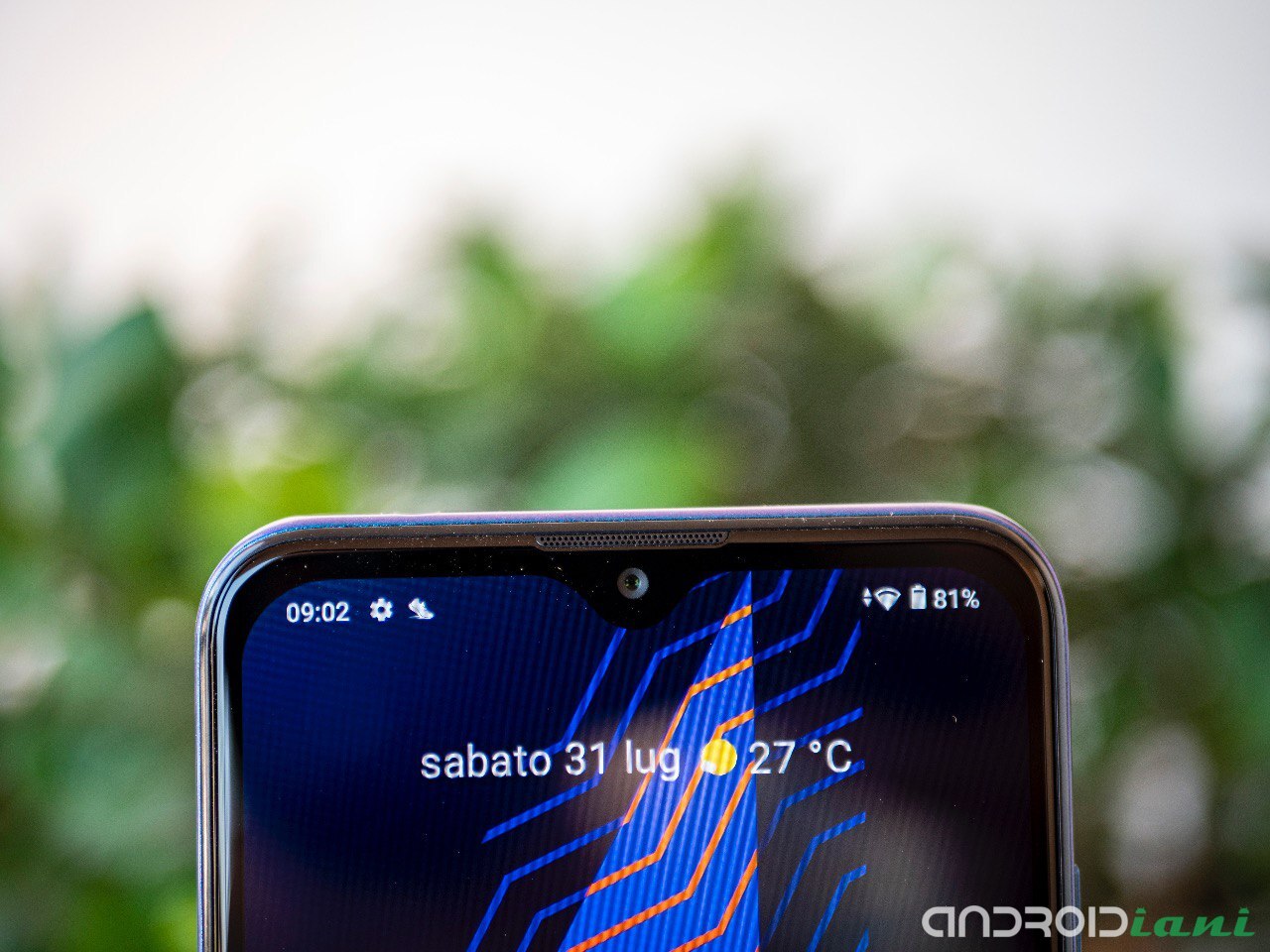
It is definitely not a device suitable for everyone, but it can be the ideal companion for those looking for top autonomy, a large screen and a balanced user experience.
Wiko Power U30 is available on the official store at the price of 179.99 €.
